
Capt Rohan Heranjal
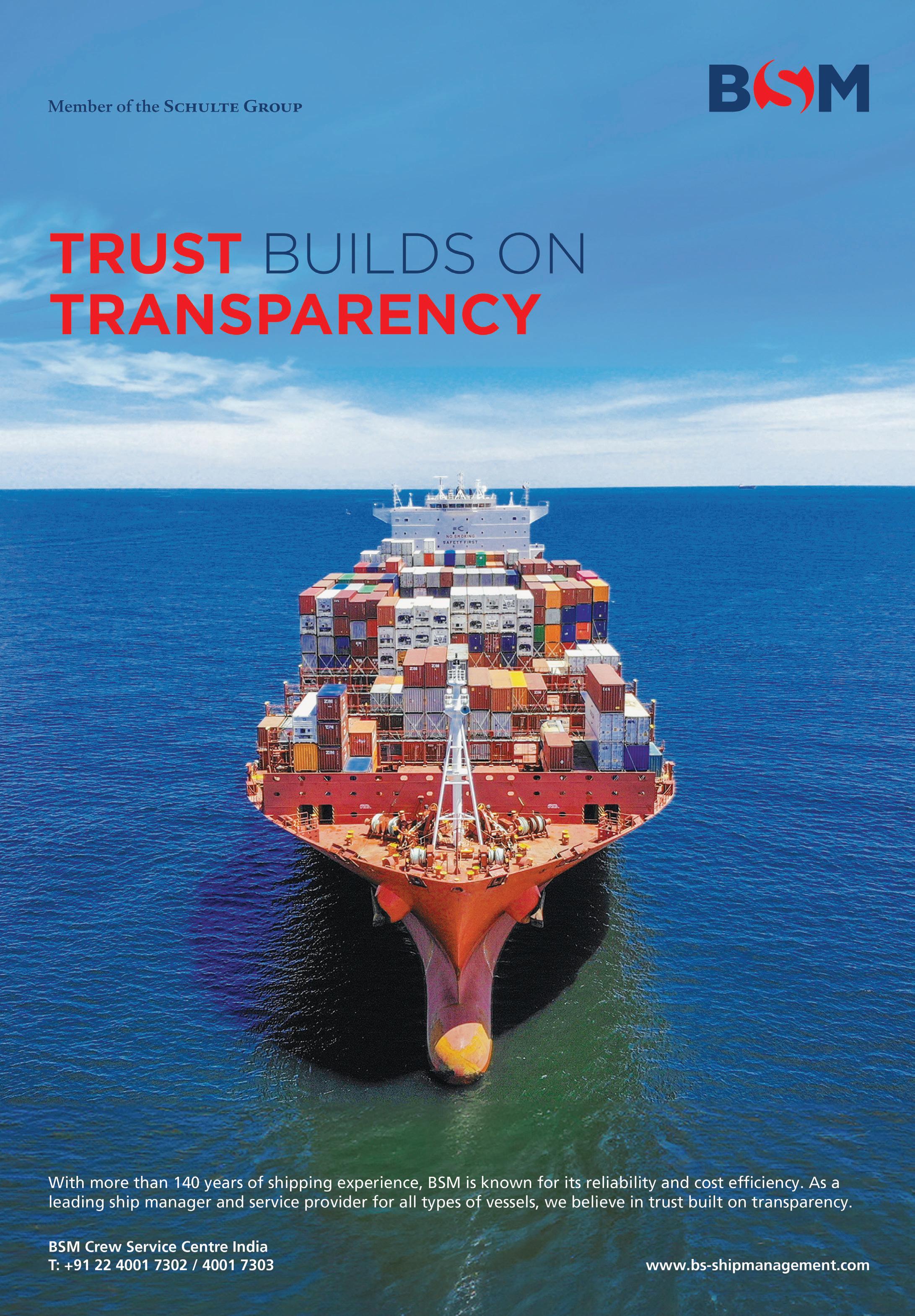
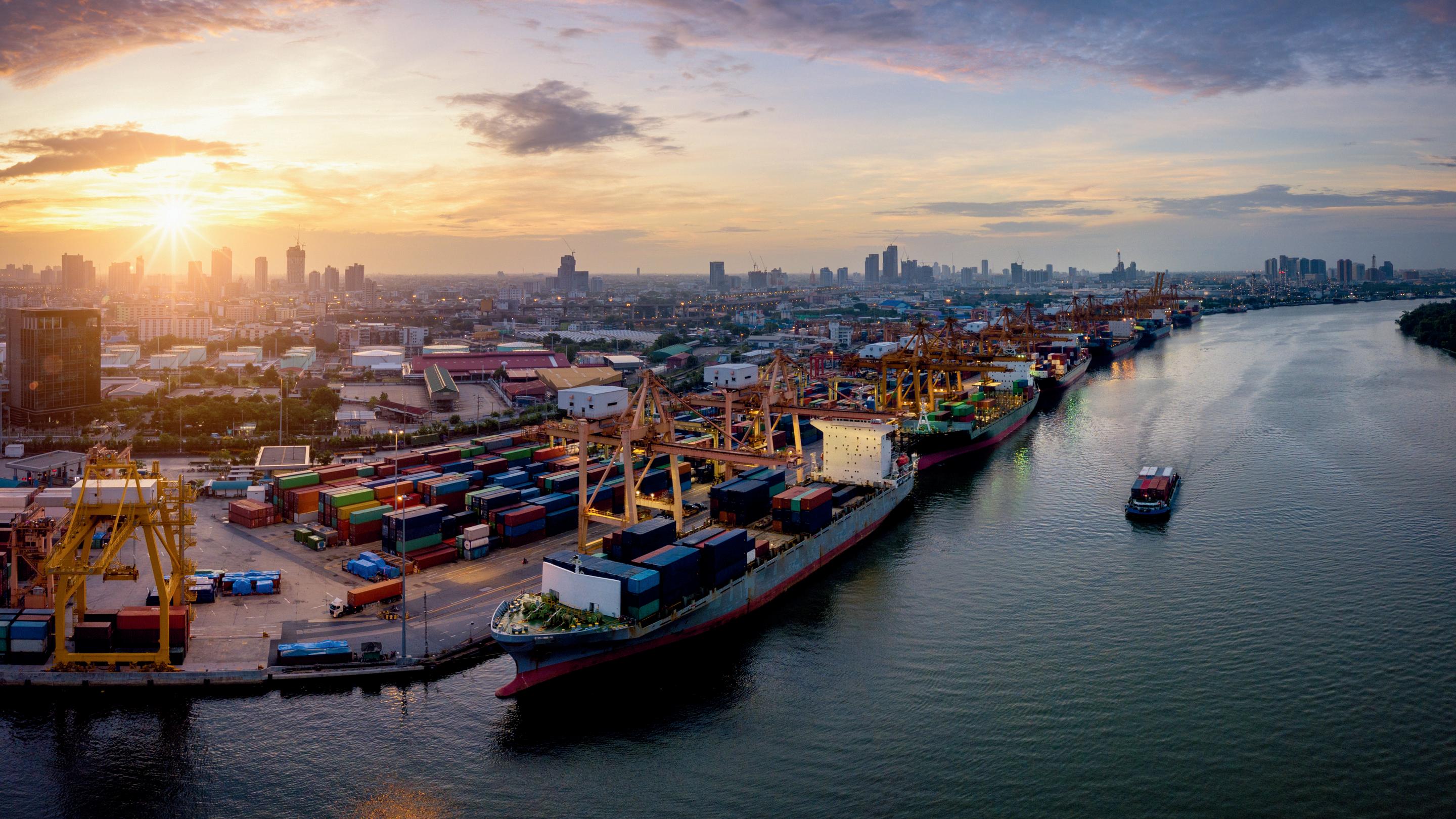


Capt Rohan Heranjal


MAXIMIZE YOUR FLEET’S EFFICIENCY WITH OUR EXPERT MARINE CLEANING PRODUCTS & ADVISORY
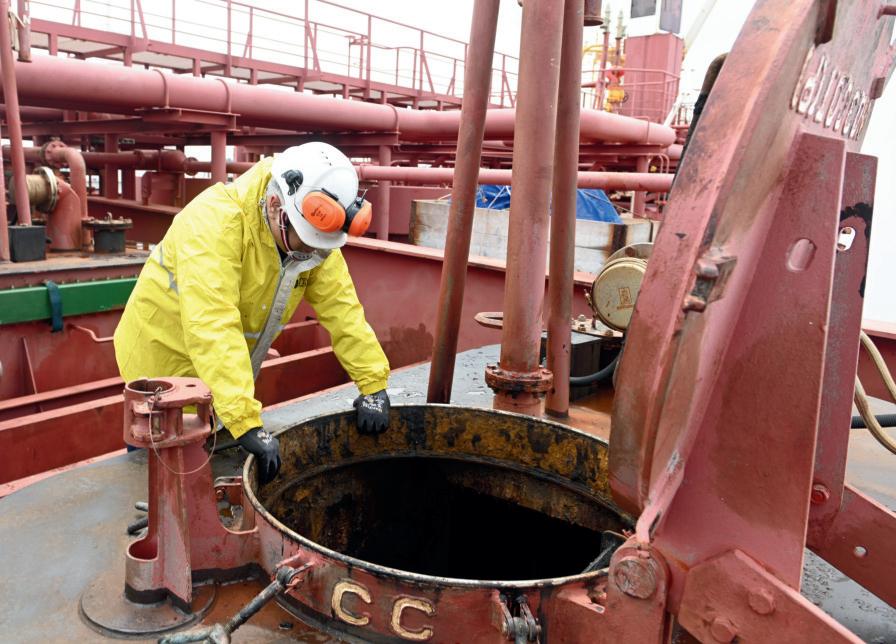
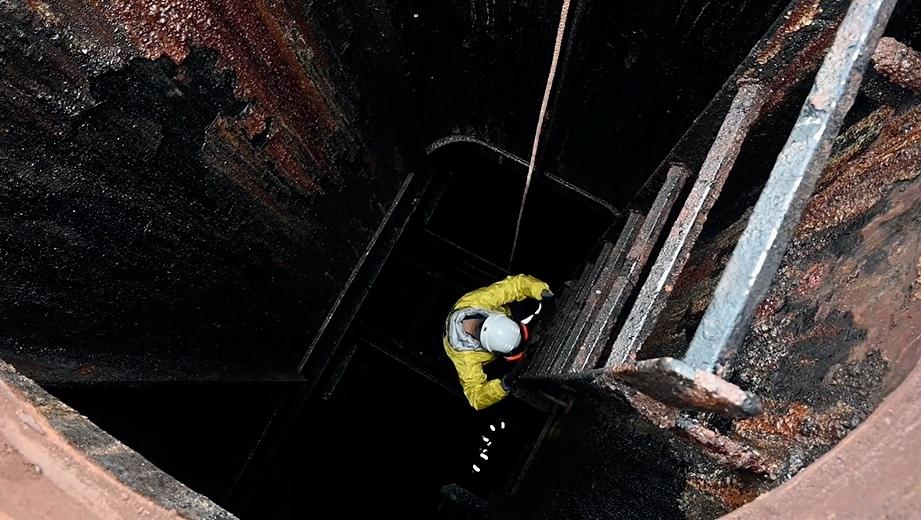

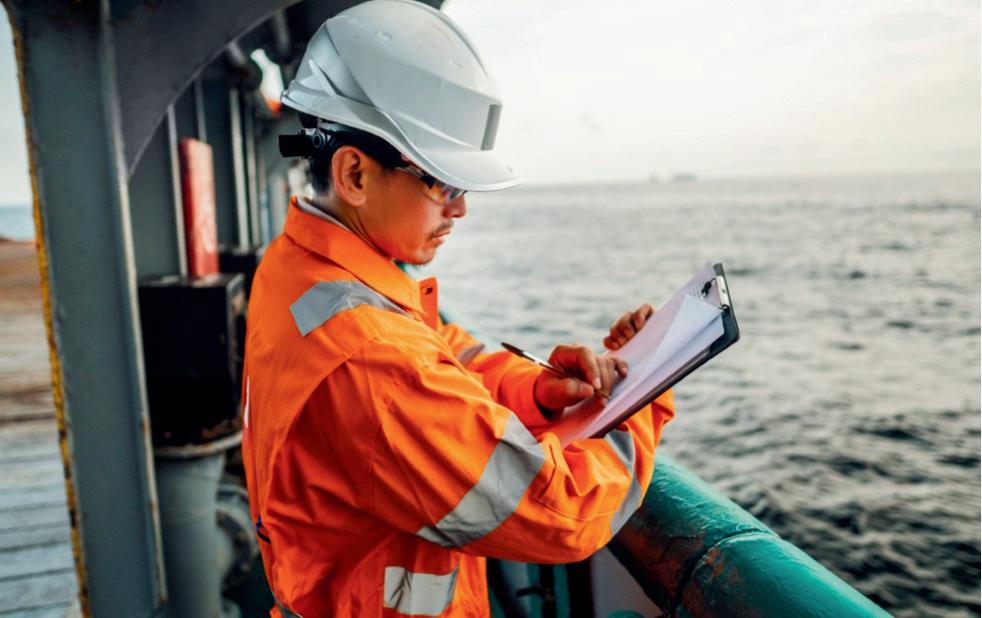
TECO Chemicals is a specialized and award-winning supplier of IMO-2020 compliant marine chemicals, cleaning chemicals for tankers and bulkers, emission-control and maintenance chemicals, equipment for tank and cargo hold cleaning, remote cleaning consultations and supercargo services.
Chemicals supplied are of exceptional quality, tank-coating manufacturer approved and in line with MARPOL regulations from stocks and production facilities worldwide.
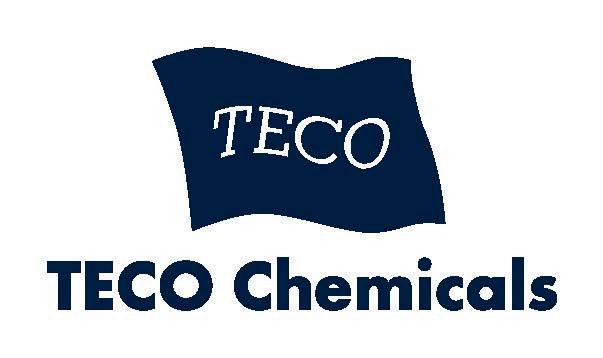

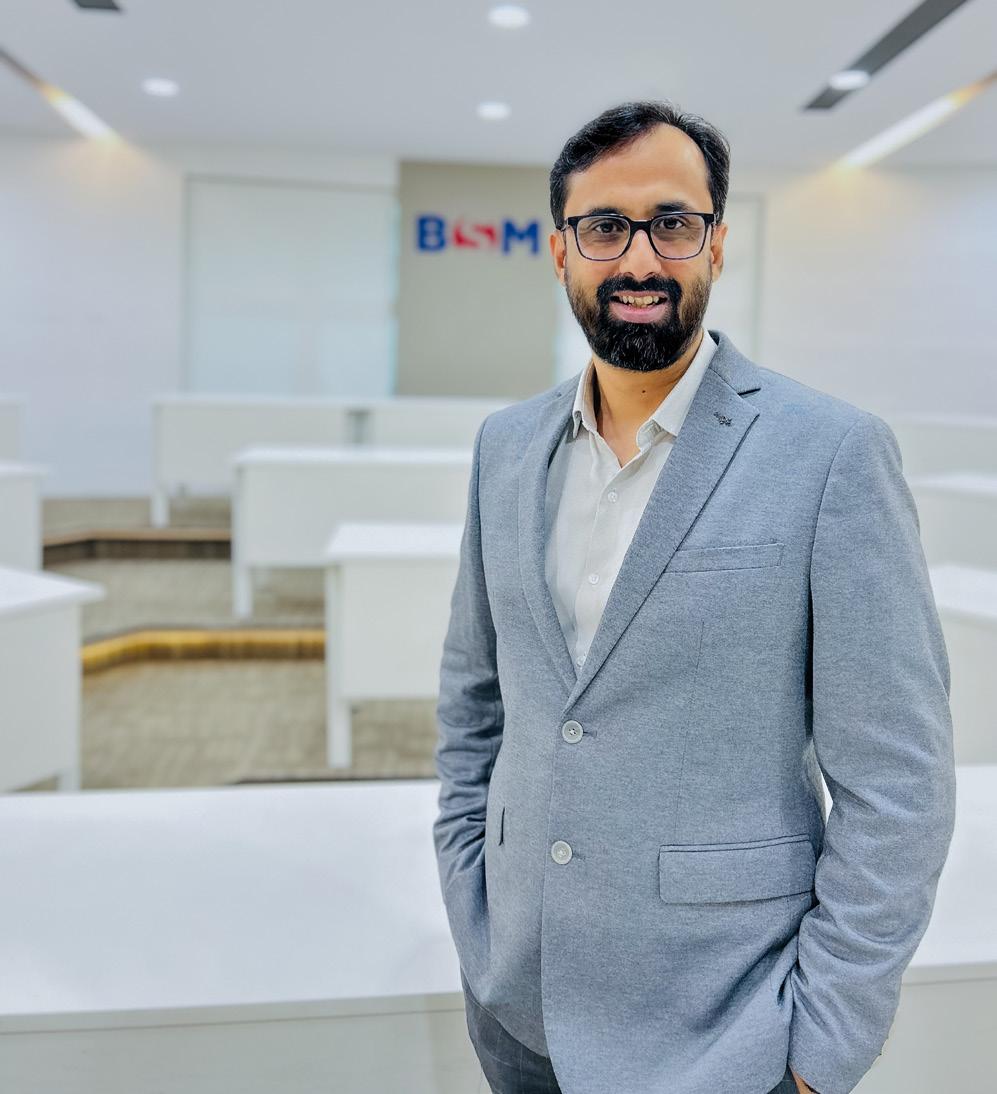
Building a Strong Maritime Community 20 Cover Story
14 23 26
National Highways: Driving Business Growth and Lowering Logistics Costs
17
Trucking and Transport: The Industry’s Lingering Hurdles
Disclaimer
The Zero-Emission Trucking Opportunity in India
Strengthening Rural Supply Chains: A Core Pillar of the ‘Viksit Gaon’ Strategy
37 29
Teamglobal Logistics Launches Roadbridge
30 34
Machine Learning and AI in Shipping: Efficiency and Innovation
Global Maritime Leadership Converges at AGMS & AGMA 2025
Behind Every Delivery: Discovering a Career in Logistics
All advertisements in this magazine are placed with no liability accepted by the publisher for the material content therein. No responsibility is accepted by the publisher for omission or error or non-insertion of any advertisements. All advertisements and material in this magazine are subjected to approval by the publisher and are not necessary the opinion of the publisher. No liability is accepted for advertisements that are placed or any information that might be criminally connected. All information is checked to the best of our knowledge and is reliant upon the material submitted not being in contravention of all relevant laws and regulations and within the provisions of the Trade Practices Act.
Reproduction Prohibited
Maritime Matrix Today will not be responsible for the views expressed by contributors in their personal capacity. All rights reserved. Reproduction in part or whole without the permission of the Editor is prohibited.
Readers are recommended
To make appropriate enquiries before sending money, incurring expenses or entering into any commitment in relation to any advertisement published in this publication. Maritime Matrix Today does not vouch for any claims made by the Advertisers of Products and Services. The Printer, Publisher, Editor and Owner of Maritime Matrix Today shall not be held liable for any consequences, in the event such claims are not honoured by the Advertisers.
RNI: MAHENG/2013/50159
Published by Marex Media Pvt Ltd C-209, Morya House, New Link Road, Andheri West, Mumbai 400058
Email: info@marexmedia.com
Printed by Young Graphics
Printed at Young Graphics, 208 Shankala Industrial Premises, Gogatewadi, Goregaon(E), Mumbai-400 063
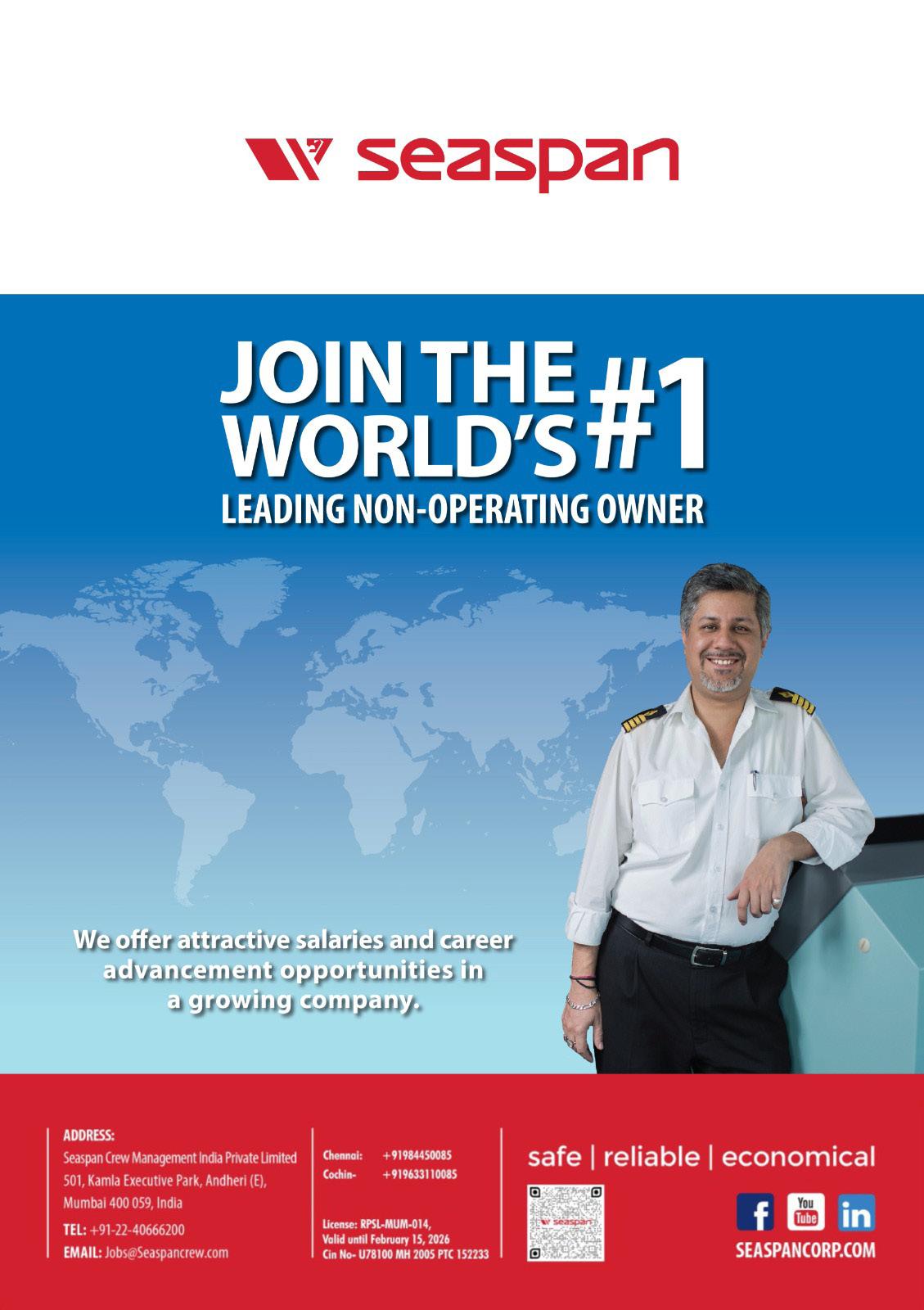
Zero-emission trucking is becoming a global phenomenon, driven by the need to decarbonize the transportation sector and create a more sustainable future. And, we are no exception.
India, well-positioned to become a crucial player in the inevitable transition to zero-emission freight vehicles for the country, is experiencing historical growth; urbanisation, population increase, the rise of e-commerce, and increasing income levels that have heightened the demand for goods and services.
The road freight sector is expected to grow fourfold by 2050 to meet this rising demand. However, this will have its downside as well. By continuing to run on fossil fuel these burgeoning fleets will only further pollute air, exacerbate public health hazards, and increase energy costs, at a time when many countries are working valiantly to bring them down.
India’s large and growing medium and heavy-duty truck fleets, coupled with ambitious emission reduction targets, positions it to potentially lead at ZET adoption.
India has already developed a Bharat Zero Emission Trucking (ZET) Policy Advisory document, outlining policy interventions across five key areas to accelerate ZET adoption. This roadmap includes vehicle technology, infrastructure, financing models, and policy framework, with a focus on prioritizing electrification for early mover segments.
The advisory document emphasizes the need for collaboration among stakeholders, including manufacturers, operators, and financial institutions, to ensure a smooth transition.
According to NITI Aayog, ZETs are projected to reach 85% of truck sales in India by 2050 and ZET adoption can reduce 2.8–3.8 gigatons of CO2 emissions cumulatively through 2050.
Globally, countries have recognized the benefits of a ZET corridor deployment and are leveraging it as a key strategy to drive and solidify market growth.
While China has developed several such corridors equipped with battery swapping stations for heavy-duty trucks that enable trucks travelling on these routes to change battery packs in three to five minutes, the United States has released the National Zero-Emission Freight Corridor Strategy, aimed at deploying ZET infrastructure over 78,000 km of its freight highway network through phased investment and policy implementation.
Implementation of this plan is expected to de-carbonize the transport of more than 2.3 billion tons of goods by 2040.
Organizations like NACFE (North American Council for Freight Efficiency) are working to accelerate the adoption of efficiency-enhancing and environmentally beneficial technologies in freight movement.
Similarly, the Northern Corridor Green Freight Strategy in Africa aims to create EV-ready corridors across Kenya, Uganda, Rwanda, Burundi, South Sudan, and areas of the Democratic Republic of Congo by 2030. The EU has also mandated charging stations with minimum output of 350 kilowatts every 100 km along its highways, starting in 2025.
Needless to say, the induction and wider adoption of ZETs requires technical expertise and systematic policy interventions to create an enabling techno-socio-economic ecosystem in India. While challenges remain, the transition to ZETs offers significant environmental, economic, and social benefits, making it a priority for the nation.
Kamal Chadha
Kamal Chadha Group CEO kamal@marexmedia.com
Shirish Kirtane HOD Graphics shirish@marexmedia.com
Radhika Vakharia CEO radhika@marexmedia.com
Santosh Nivalkar Sr. Graphic Designer santosh@marexmedia.com
Padmesh Prabhune Editor padmesh@marexmedia.com
Manish Malve Graphic Designer manish@marexmedia.com
Delphine Estibeiro Editorial Coordinator delphine@marexmedia.com
Bhavna Pimpale Coordinator bhavna@marexmedia.com
Jagdamba Pandey Manager, Business and Promotion jagdamba@marexmedia.com
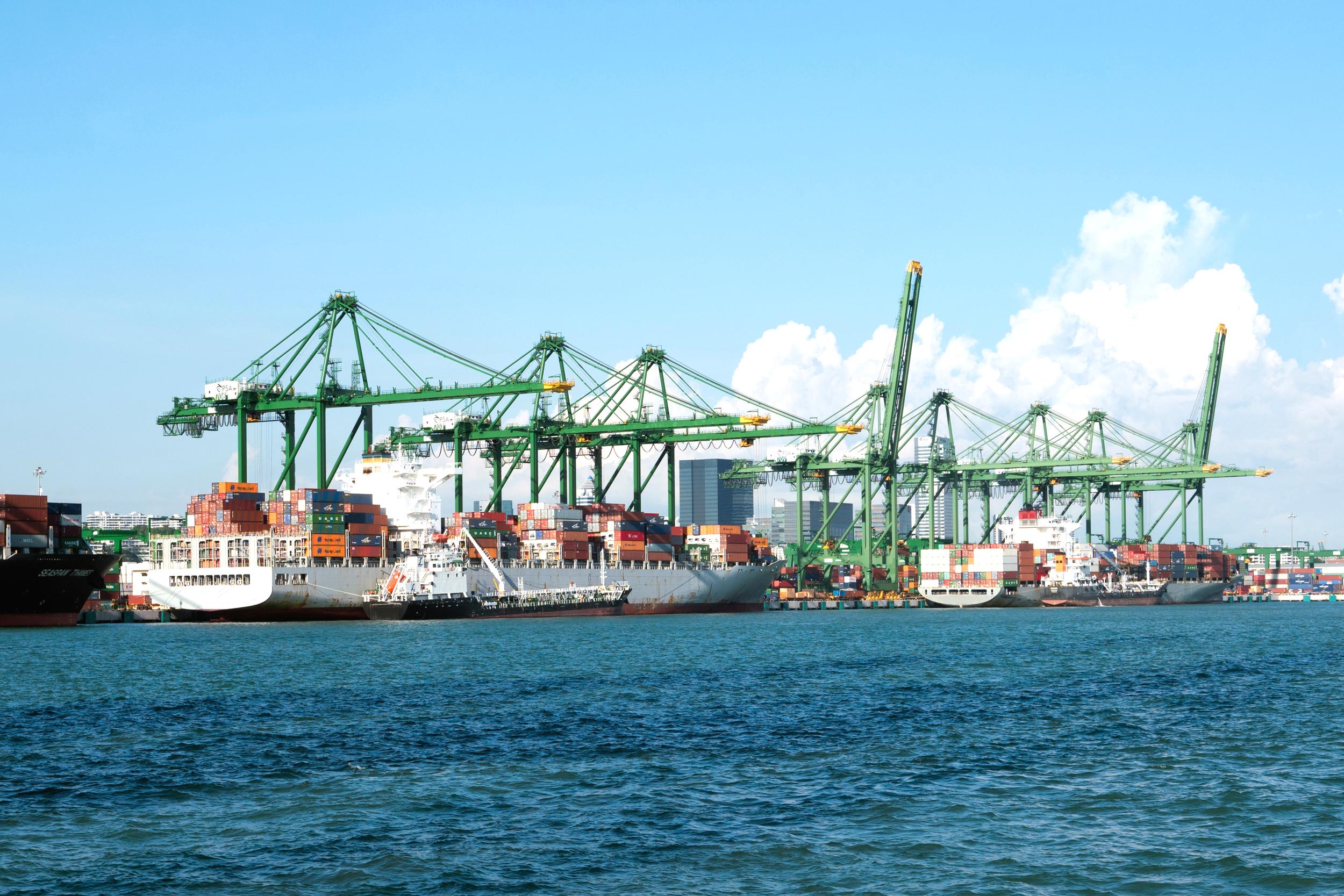
ClassNK is a major supporter of the Digital Era
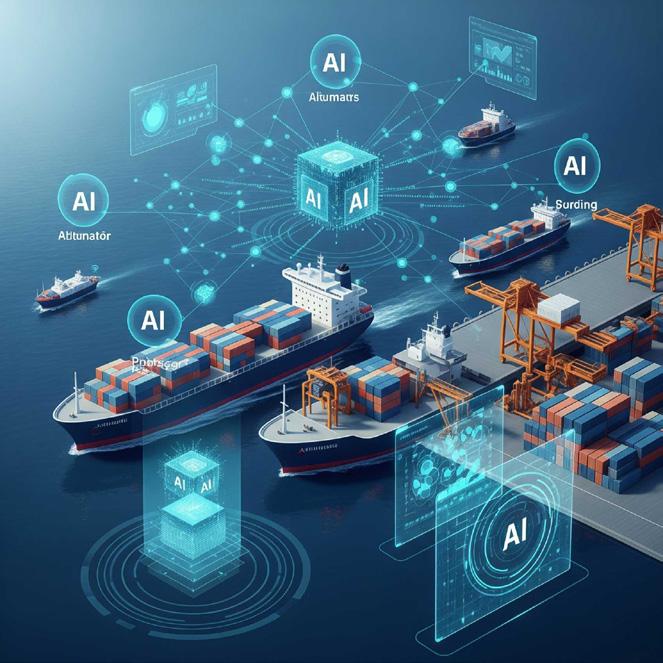
These days, artificial intelligence, or AI, is pervasive. However, what is AI exactly? Is it limited to ChatGPT and other chatbots? No! AI is a vast field with a wide variety of systems that assist machines in performing tasks that typically require human intelligence. It’s interesting to note that artificial intelligence is not new—it has existed for over 40 years! However, AI was impractical due to the slowness of earlier computers. AI is now a potent tool, even in sectors like shipping and maritime, thanks to faster computers and more data.
Let’s examine the three primary categories of artificial intelligence systems and their applications in the maritime industry:
1. Generative AI (Like ChatGPT) AI that can produce original content, including text, pictures, and even plans, is known as generative AI. Although ChatGPT generates text responses, shipping and maritime companies can also use generative AI.
An illustration from the maritime sector:
Creating Shipping Reports: Generative AI systems are able to automatically create draft reports on cargo shipments or maintenance records, eliminating the need for human intervention.
Crew Training Simulations: To teach crew members about safety protocols or emergency responses, generative AI can assist in producing training materials or virtual scenarios.
Simple Application: AI-powered daily ship log or maintenance checklist generation that saves ship employees time.
2. Machine Learning Systems Predictive Models
The area of artificial intelligence that focuses on forecasting using historical data is called machine learning, or ML. Because ships gather a lot of data while traveling, this is very helpful to the shipping industry.
An illustration from the maritime sector:
Predictive Maintenance: Sensors are used by ships to keep an eye on their machinery and engines. This data is analyzed by machine learning models, which help prevent breakdowns at sea by forecasting when a part might fail.
Route Optimization: To save time and fuel, machine learning models can forecast weather, fuel consumption, and sea conditions to recommend the best course.
Cargo Demand Forecasting: Using historical shipping patterns, AI can forecast which routes or cargo kinds will yield the highest profits.
Simple Application: Assisting shipping companies in determining the most fuel-efficient shipping routes or when to plan engine maintenance.
3. Rule-Based
Rule-based AI was used in many systems prior to the rise of machine learning. These systems adhere to predetermined, human-written rules. They are still helpful for many maritime tasks despite being simpler.
An illustration from the maritime sector:
Procedures for Port Entry: By adhering to set customs and immigration regulations, rule-based systems assist ships in automatically processing entry forms.
Safety Checklists: Rule-based systems, such as “Raise an alert if life jackets are missing,” guarantee that safety inspections proceed in the proper order.
Easy Use: Automated systems that determine whether a ship satisfies safety requirements before permitting it to depart port.
Although artificial intelligence (AI) has been around for more than 40 years, the maritime industry was unable to use it earlier because ships lacked reliable internet connections and powerful onboard computers. These days, AI tools can help ships at sea in the same way that they help factories or offices on land thanks to satellite communication, cloud computing, and improved hardware.
AI is more than just sophisticated chatbots. AI functions in the maritime sector in a variety of ways:
Generative AI assists with training and creates reports.
Machine learning makes recommendations for effective routes and forecasts maintenance requirements.
Safety checks and regulatory compliance are guaranteed by rule-based systems.
AI can be compared to providing ships with a smart assistant that never gets bored and constantly seeks to make travel safer, quicker, and less expensive. Smarter ships, not just larger ones, are the way of the future for shipping! If you’ve any questions or would like connect over a quick chat or discussion on AI & it’s impacts in the maritime industry, you can reach out to me at the below email address.
MMT
The Author

Vishrut Srivastava Managing Director Yodaplus
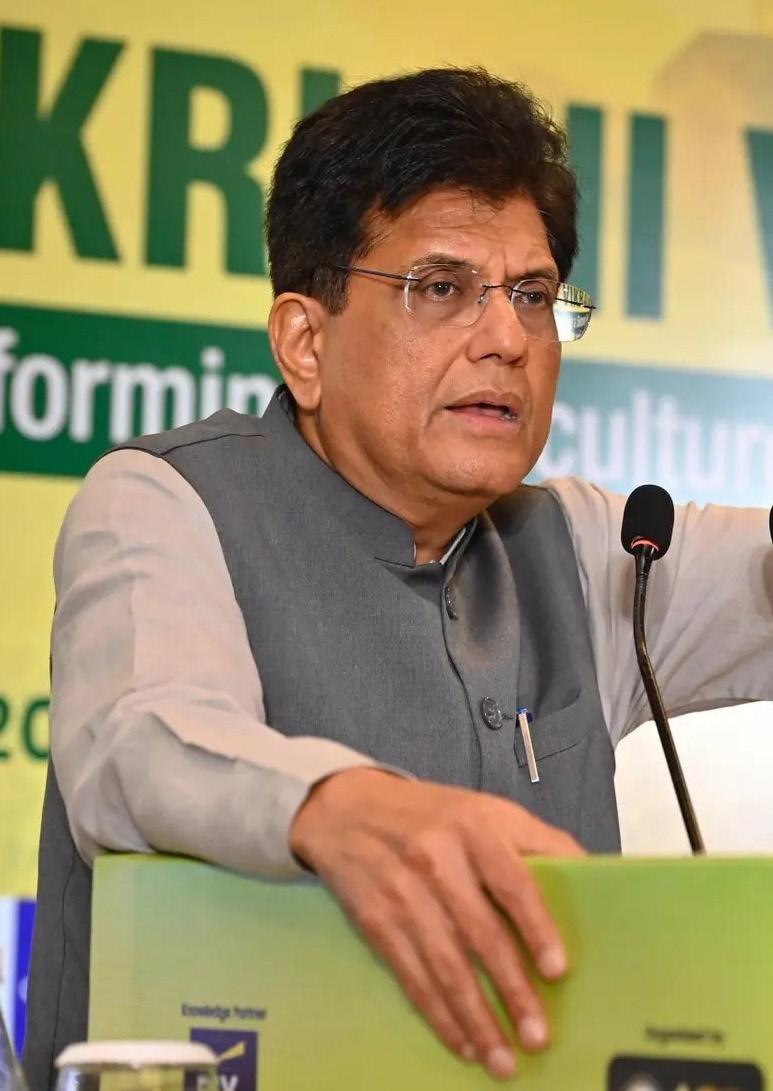
Union Commerce and Industry
Minister Shri Piyush Goyal envisions ₹20 lakh Crores Agri exports in the near future. Speaking at the ICC: Krishi Vikram Thematic Session in the Delhi, he suggested Agri exports can jump from ₹4.5L to ₹20L Cr if India scales food processing, drip irrigation, and smart packaging. Goyal emphasised that India is no longer just the land of wheat and rice. The country’s export basket is now expanding to include jamun, litchi, pineapple, and bottle gourd, with consignments of litchis from Punjab reaching Doha and Dubai and jamun making its way to the UK. India’s growing presence in global
agri markets, particularly across the Gulf, UK, and Southeast Asia, is not just a sign of commercial success but a testament to the hard work of Indian farmers, said Goyal. He stressed that packaging, organic certification, and branding are critical to helping Indian produce stand out internationally. “This is the new India, where even a humble fruit like jamun finds a market abroad,” he said, adding that the global push for millets, championed by Prime Minister Narendra Modi during the International Year of Millets, has helped spotlight India’s ancient grains on the world stage.
Maharashtra has signed a Rs 120 crore Memorandum of Understanding (MoU) with international partners to transform six Industrial Training Institutes (ITIs) into global-standard maritime and logistics training hubs. The collaboration involves Atal Solutions International BV (Netherlands), M.D. Rural Group, and is backed by Export Credit Agencies (ECAs) from the Netherlands, Denmark, and Poland. The MoU was signed in the presence of state leadership, including the Chief Minister and Deputy Chief Ministers, along with ministers from the Ports and Skill Development departments. The upgraded ITIs, located in Mumbai, Pune, Baramati, Sindhudurg, Nagpur, and Nashik, will feature simulation labs, modern curricula, and internationally certified programs, aiming to train
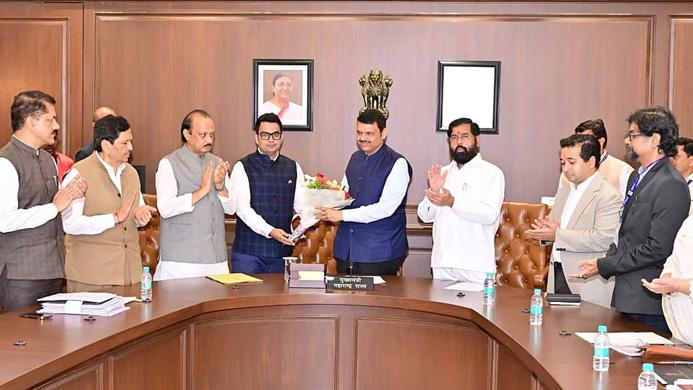
5,000 to 7,000 students annually.
The initiative is structured under a social impact model with ECA-based financing, offering substantial risk coverage. Implemented by the Rural Enhancer Group of India, the project
also receives support from JNPA and the Maharashtra Maritime Board. This marks a pioneering step toward creating India’s first export-capable vocational training model in the maritime sector.
In a major step towards enhancing smarter and safer railway operations, Indian Railways has signed a Memorandum of Understanding (MoU) with the Dedicated Freight Corridor Corporation of India Limited (DFCCIL) to introduce AIdriven inspection technology aimed at transforming train safety and maintenance practices. The MoU, signed at Rail Bhawan by Sumit Kumar, Director (Project and Development), Railway Board, and Jawahar Lal, GGM (Mechanical), DFCCIL, paves the way for the deployment of the Machine Vision Based Inspection System (MVIS), a cutting-edge, AI- and machine learning-based tool designed to automate inspection of moving trains. The MVIS technology works by capturing high-resolution images of the undergear of trains in motion.
Worldwide Flight Services (WFS), a SATS Group company, has unveiled its fourth cargo facility at Copenhagen Airport, expanding its specialised E-Commerce & Freight Forwarder Handling (EFFH) operations in Scandinavia. WFS claims its latest e-commerce solutions can reduce international shipment times by a full day through faster sorting and customs facilitation for Scandinavian deliveries. The EFFH service ensures cargo is Ready-for-Carriage and supports customs clearance with improved speed and efficiency. The newly launched 4,800m² warehouse raises WFS’s total cargo footprint at the airport to over 21,500m², which also includes a pharma-specific temperaturecontrolled unit. This strategic move
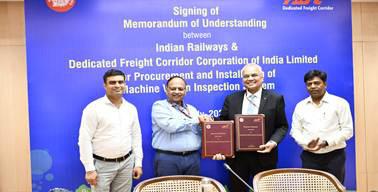
It can instantly detect loose, hanging, or missing components and generate real-time alerts, enabling railway teams to take swift preventive action before any issue escalates into a safety hazard. This is the first time Indian Railways is deploying such an AI-powered system, and DFCCIL will lead the procurement,
supply, installation, testing, and commissioning of four MVIS units. The initiative is expected to drastically reduce the need for manual inspections while also enhancing safety, preventing service disruptions, and speeding up maintenance.
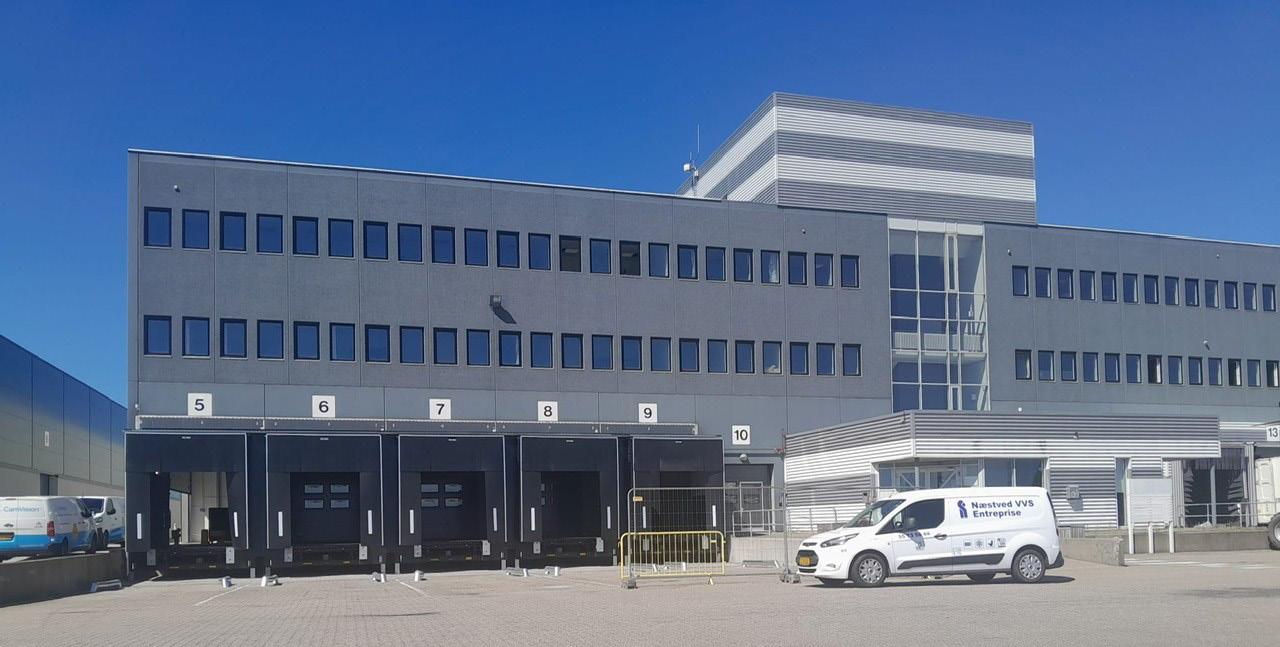
enables WFS to offer enhanced valueadded solutions for import-export cargo, including security screening, shipment sorting, repacking, labelling, and road transportation. According to WFS leadership, the expansion reflects growing demand for outsourced
handling services and aligns with their broader European strategy. Copenhagen now joins WFS’s EFFH hubs across Belgium, France, the Netherlands, Germany, Spain, and Sweden.
In order to modernise its delivery network, India Post is setting new benchmarks for speed and service. The Department of Posts is now in advanced talks with airline operators to secure dedicated cargo space on passenger flights, a first-of-its-kind initiative aimed at ending delivery delays and strengthening India’s logistics backbone. According to the plan a “hard block” of air cargo capacity on commercial airlines is being worked out. This ensures reserved space for time-sensitive parcels like Speed Post
and express consignments, putting an end to last-minute parcel dumping due to overbooked flights or higherpaying cargo. It’s a major step toward guaranteed on-time delivery and higher customer satisfaction for millions of users. “Our current system relies on available space, which leaves postal shipments vulnerable to being offloaded. This change removes the guesswork,” said a senior official involved in the planning. The move is especially significant in a country racing toward urbanisation and a
digital-first economy, where rapid and reliable logistics are the lifeblood of commerce. It’s not just about faster delivery; it’s about building a smarter, fairer, and greener logistics network. By locking in air cargo slots, India Post can slash delivery times, especially over long-haul domestic routes where road and rail can lag behind. This is a game-changer for SMEs in Tier II and III cities, helping them plug into India’s growing e-commerce ecosystem and compete on a national scale.
The Aurangabad Industrial City (AURIC) in collaboration with the Confederation of Indian Industry (CII) will soon establish a 20,000 sq. ft. Skill Development Centre. DPIIT Secretary Amardeep Singh Bhatia’s during his visit to Chhatrapati Sambhaji Nagar on July 12 to review industrial infrastructure and startup progress in the region informed that the Union Ministry of Commerce and Industry has plans to develop a new skill development centre at the Aurangabad Industrial City. During the interaction with industry leaders at AURIC Hall, key recommendations were made on logistics, housing, connectivity, and MSME land allocation. Suggestions included boosting connectivity between Aurangabad, Hyderabad, and Chennai, setting up a Vande Bharat terminal, improving logistics at Bidkin, and reserving more land for MSMEs and startups. The Secretary
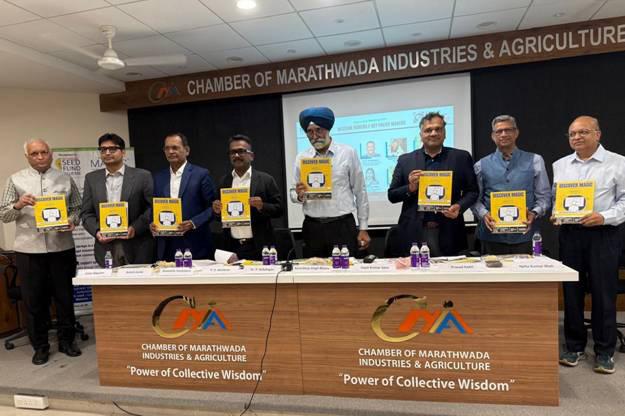
also interacted with entrepreneurs at MAGIC and visited several industrial units at Shendra and Bidkin, appreciating their contribution to manufacturing and employment. The visit concluded with a tour of AURIC’s infrastructure, including the ICCC
and 3D city model. Emphasising public-private collaboration, Bhatia reaffirmed the Centre’s focus on positioning Maharashtra as a leading manufacturing and innovation hub.
The successful completion of a 66.916-km-long greenfield spur connecting the DelhiVadodara Expressway to Jaipur via Bandikui, cuts the travel time to 3 hours. Now travellers will be able to reach Jaipur from Delhi in just three hours. The Greenfield Bandikui Spur is also expected to reduce logistics costs, support industrial development along its alignment promising further to transform logistics efficiency across the region. Built at a capital cost of ₹2,016 crore, the 4-lane, access-controlled stretch aims to decongest existing corridors.“We have successfully completed the 66.916 km long, 4-lane Greenfield Bandikui Spur, constructed at a capital cost of ₹2,016 crore. This strategically significant project provides direct, access-controlled connectivity between the Delhi–Vadodara Expressway and Jaipur—addressing the lack of a direct route that previously
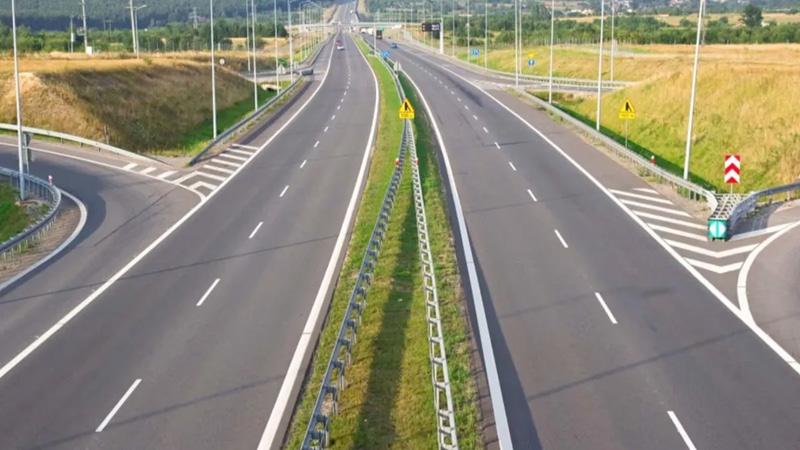
compelled commuters to take longer, fuel-intensive journeys,”Union Minister of Road Transport and Highways Nitin Gadkari said in a post on X. The Bandikui Spur offers direct, access-controlled connectivity from the Delhi-Vadodara Expressway to Jaipur, eliminating the need for longer detours via NH-48 and NH-21 thus reducing
congestion, faster cargo delivery, and lower fuel consumption, factors critical to logistics players. Industry experts see the spur as a strategic win for regional trade, enabling smoother inland connectivity and supporting India’s ambition for robust multimodal logistics infrastructure under Gati Shakti.
INS Nistar, first indigenously designed & constructed Diving Support Vessel, commissioned in Vizag in the presence of Raksha Rajya Mantri Sanjay Seth in Visakhapatnam on July 18, 2025. The ship, which is the first of the two Diving Support Vessels being built by Hindustan Shipyard Limited, is designed to undertake complex deep sea saturation diving and rescue operations – a capability select Navies possess across the globe. INS Nistar is installed with state-of-the-art Diving Equipment such as Remotely Operated Vehicles, Self-Propelled Hyperbaric Life Boat, Diving Compression Chambers. It can undertake diving and salvage operations upto 300m depth. It would also serve as the ‘Mother Ship’ for deep submergence rescue vessel to rescue and evacuate personnel, from a dived submarine in distress well below the surface. The commissioning of the 118m ship, with a displacement of more than 10,000 tons, upholds the Indian Navy’s resolve towards continuously strengthening its maritime capabilities in the Underwater Domain. With participation of 120 MSMEs and incorporating over 80%
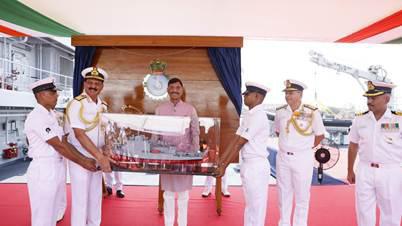
indigenous content, INS Nistar is a statement to India’s ability to build complex ships at par with international standards. The commissioning ceremony was attended by senior Naval officials, distinguished civilian dignitaries, the crew of erstwhile Nistar and representatives of Hindustan Shipyard Limited.
The National Highway network is indispensable for logistics operations and plays a critical role in the overall economic and social development of the country
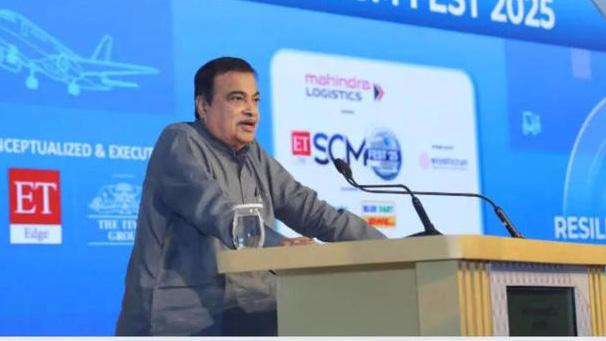
National highways are significantly boosting B2B growth by enhancing connectivity, reducing logistics costs, and improving overall business efficiency. The development of strategic corridors, like the eight high-speed corridors recently approved, is a key part of this transformation. These corridors facilitate faster movement of goods and people, leading to increased trade and economic activity.
India’s road infrastructure is undergoing a transformative overhaul through the Bharatmala Pariyojana, a flagship initiative approved in 2017. The key goal of the project is to construct 34,800 km of roads. This is all set to enhance connectivity, reduce logistics costs, and drive economic growth by bridging critical infrastructure gaps.
The project’s comprehensive scope includes the development of economic corridors, expressways, border roads, and coastal connectivity roads. Specifically, the project encompasses 8,737 km of economic corridors, 2,422 km of expressways, and 1,619 km of border roads. By improving logistics efficiency and connectivity, the project is projected to have a profound impact on the country’s
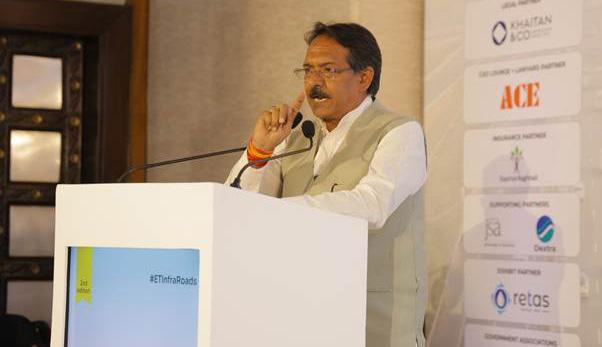
economic landscape.
By 2025, significant progress has been made, with 6,669 km of high-speed corridors awarded and 4,610 km completed. With a projected Compound Annual Growth Rate (CAGR) of 9.50% from FY2025 to FY2032, India’s road infrastructure sector is expected to reach $559.09 billion by FY2032.
“A combination of expressways, economic corridors, digital tolling and green fuel adoption has helped significantly reduce logistics costs in the country, setting the stage for India’s next growth phase.”, said Nitin Gadkari, Minister, Ministry of Road Transport and Highways, (MoRTH).
Addressing the ET Edge Supply Chain Management Fest 2025, Gadkari emphasised the pivotal role of logistics in the country’s economic trajectory and that logistics costs have already come down to 10% of GDP from 16%. He said, “Logistics costs in India are decreasing. The cost is now 10% of GDP and we aim to cut cost of logistics to 9% of GDP.”
India has the second largest road network in the world. The Government of India has undertaken several initiatives to enhance and strengthen the National Highways network through flagship programmes such as the Bharatmala Pariyojana which includes the subsumed National Highway Development Project (NHDP), the Special Accelerated Road Development Programme for the North-East Region (SARDP-NE), and many more ongoing projects.
• As of March 31, 2025, India has more than 63 lakh km of road network, out of which National Highways is 1,46,204km, State Highways is 1,79,535 km and 60,19,723 km other roads.
• The length of National Highways was 91,287 km in 2013-14. Therefore, there has been an increase of about 60% (to 1,46,204 km) in the length of National Highways. Indian Road Network is the second largest in the world.
• In the last 11 years (2014-25), India has amplified 54,917 kms to the National highways network.
• Length of National High-Speed Corridors (HSC) has expanded from 93 km in 2014 to 2,474 km at present. 3,600 km of high-speed corridors built in last five years.
• Length of 4 lane and above NHs (excluding HSCs) increased by 2.5 times from 18,278 km in 2014 to 45,947 km at present.
• In 2013-14, the pace of NH construction was about 11.6 km/day which increased to about 34 km/day in 2025. The increase in work awards and construction for NH is 108% and 150% respectively between 2013-14 and 2024-25.
• There is an increase of 6.4 times in Ministry investment on road infrastructure between 2013-14 and 2024-25.
• There has been a 570% increase in road transport and highway budget from 2014 to 2023–24.
“The Government is committed to building worldclass Road and Transport Infrastructure for Viksit Bharat@2047.,” said, Minister of State for Corporate Affairs and Road, Transport & Highways, Harsh Malhotra.
Addressing the Road and Highways Summit recently held in Delhi on 18th July, 2025, the minister highlighted the government’s constant commitment to constructing a topnotch road and transit network.
Citing an example, he stated that these modern highways are not just roads they are lifelines of progress, connecting people, industries, and opportunities with a reduced time. “And by expanding the network, the government has redefined the very experience of travel- making it faster, safer and significantly more comfortable for every citizen.” he added.
Malhotra further mentioned that the national highway network has expanded from 91,000 km in 2014 to over 1.46 lakh km today, making it the second-largest road network in the world. Also the government’s spending on road infrastructure has grown 6.4 times between 2013–14 and 2024–25 and the budget allocation for road transport and highways has seen a 57% increase from 2014 to 2023–24, reflecting the government’s unwavering commitment to connectivity, mobility and economic growth.
The National Highways Authority of India (NHAI) has released the asset monetisation strategy for the road sector aiming to increase public-private partnerships in infrastructure development. It presents a structured framework to mobilise capital through toll-operatetransfer, infrastructure investment trusts and securitisation models. The NHAI has previously raised more than INR140 billion (USD1.6 billion) through these models.
The strategy is based on maximising the value of government road assets, achieving transparency, distribution of relevant information to investors, and developing the market through investor base and stakeholder engagement.
The NHAI hopes this will lead to financial sustainability, improve road assets in India and introduce advance technology.
The strategy will provide a steady alternative source of funding for the NHAI, reducing its reliance on traditional sources and allow licensing of a public-sector asset to a private-sector company for a one-time or periodic consideration through a concession or contractual framework. This method will enable the authority to convert existing assets into sources of funds, which can be invested into developing new assets.
National highways form the backbone of India’s logistics and transportation ecosystem, playing a pivotal role in driving B2B growth across sectors. With over 140,000 km of roadways connecting industrial hubs, ports, markets, and remote regions, these highways significantly reduce
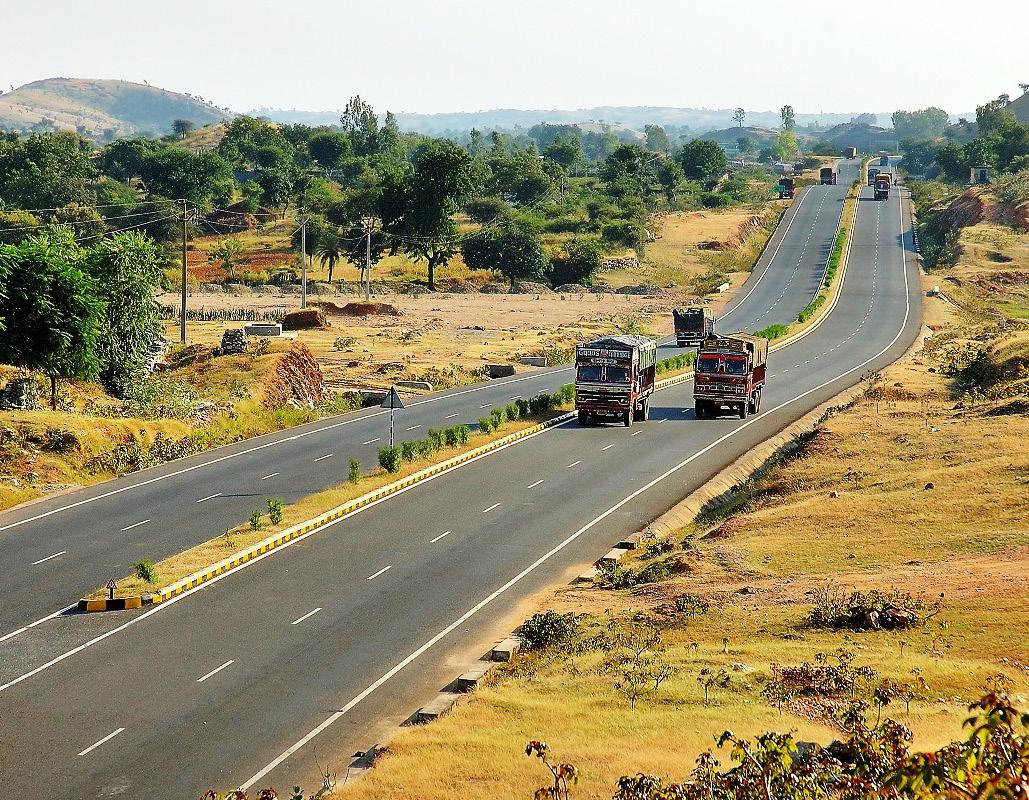
travel time, fuel consumption, and operational costs for businesses.
Improved connectivity enhances supply chain efficiency, ensuring timely delivery of goods and raw materials — a critical factor in manufacturing, retail, and e-commerce sectors. For MSMEs and large enterprises alike, national highways open access to broader markets and distribution networks, creating new business opportunities and partnerships.
Initiatives such as the Bharatmala Pariyojana further boost infrastructure quality and freight movement across economic corridors. As India strengthens its position as a global manufacturing and export hub, national highways remain central to enabling faster, safer, and more costeffective B2B operations — fuelling the next wave of economic and industrial expansion.
According to Malhotra, every rupee invested in highways brings a threefold return to GDP, unlocks jobs, and boosts revenues. “The government is not just building roads; it is laying the foundation for a prosperous, peaceful, and resilient Bharat.”
Strategic corridors are not just about building roads; they are about building a foundation for economic growth by connecting businesses, facilitating trade, and improving the overall business environment.
While the Viksit Bharat does present the ray of hope and opportunities for global business venture one would await to have reduced logistics cost soon.
MMT
India’s road infrastructure sector presents lucrative opportunities for global companies in construction, technology, sustainability, and smart road solutions. With increasing government focus on modernization and integrating advanced technologies to enhance efficiency, safety, and sustainability, international players can establish a strong presence in this rapidly growing market. Key technological advancements and opportunities under Bharatmala Pariyojana are:
• Automated and Intelligent Machine-Aided Construction (AIMC): Adoption of AIMC technologies to modernize highway construction, improving quality, reducing time, and enhancing safety.
• Self-Healing Roads: Increasing demand for selfrepairing asphalt to develop self-healing roads, minimizing maintenance requirements and enhancing safety.
• Drones and Robotics: Drones and robotics are revolutionizing construction, enabling faster, safer, and more precise operations, and enhancing overall project efficiency.
• Smart Roads with Embedded Sensors: Increasing demand for equipped with embedded sensors to monitor traffic conditions, optimize resource utilization, and enhance safety.
• Artificial Intelligence (AI) in Traffic Management: AI-powered systems, including AI cameras, monitor and manage traffic, enforce regulations, and enhance road safety.
• Electric Highways: India is exploring electric highways to support the electrification of heavyduty vehicles, reducing carbon emissions, and promoting sustainable mobility.
• Road Safety and Traffic Management: India is adopting AI-powered surveillance, automated traffic enforcement, and real-time road monitoring. Foreign companies offering road safety infrastructure, smart traffic control, and accident prevention solutions should consider exploring market entry strategies.
• Toll and Smart Payment Systems: The adoption of FASTag, GPS-based tolling, and electronic toll collection opens the door for foreign firms specializing in digital payments and RFID technology.
• In recent years road infrastructure has created 45 crore man-days of direct employment, 57 crore man-days of indirect employment and 532 crore man-days of induced employment which demonstrates the substantial impact of infrastructure projects on job creation across various sectors.
Essential to both local and long-haul transport, road trucks encounter pain points that continue to test the resilience of road transport

Trucking is an essential component of India’s logistics and supply chain, and its continued development is crucial for the country’s economic growth. While the Road Transport Sector accounts for about 87% of passenger traffic and 60% of freight traffic movement in the country, Trucking is the backbone of India’s logistics and supply chain, accounting for 60-70% of freight traffic on the country’s vast road network.
Trucks provide flexibility, speed, and wide coverage, connecting diverse regions and facilitating the movement of goods for various industries. The sector is experiencing significant growth and transformation, driven by government initiatives and technological advancements. Different types of trucks, including
trailer trucks, refrigerator trucks, and dump trucks, are used to handle diverse cargo types and logistical needs. Effective logistics operations rely on factors like route planning, real-time tracking, and efficient fleet management, often supported by specialized software.
As the trucking ecosystem in India becomes more integrated with intelligent logistics, several companies those providing trucking and logistics services are playing a crucial role in bridging the operational gaps. By offering real-time tracking, intelligent route mapping, freight matching, and digital documentation, these companies exemplify the new-age solution for efficient logistics trucking.
Some of the major players include Blue Dart, Allcargo Logistics, Mahindra Logistics, VRL Logistics, and Transport Corporation of India (TCI). These companies offer a range of services, from fulltruckload (FTL) and less-than-truckload (LTL) to express and specialized transportation. A trucking logistics company is an organization that, on behalf of its clients, handles various supply chain processes to get freight where it needs to be safely and efficiently. Depending on the company, their services might include warehousing, packaging, distribution and disposal.
The advantage of logistics in the truck business is multifaceted. From operational efficiencies to cost savings, the right logistics strategy can transform a trucking operation. Fleet operators can reach maximum operational efficiency through wellorganized trucking logistics that minimize empty trips along with hikes in transport weight limits while achieving continuous fleet deployment.
The National Logistics Policy and PM Gati Shakti initiatives from the government promote freight movement and seamless integration of different infrastructure modes through defined schemes. However, the Indian trucking industry is experiencing a mix of trends, including government initiatives promoting electric trucks and evolving infrastructure.
The Indian trucking industry faces a multitude of challenges, including driver shortages, infrastructure limitations, rising operational costs, and security concerns. These issues impact efficiency, profitability, and the overall sustainability of the sector. While the recent e-truck scheme offers incentives to boost adoption of electric the industry continues to grapples with the potential impact of mandatory airconditioning for truck cabins. Additionally, a report highlights the health challenges faced by a large number of truck drivers. Those in the know-how, enlightens further about Long working hours, lack of proper rest, and stressful conditions affecting the health and well being of truck drivers.
Recently in Maharashtra a statewide strike by truck transporters Vahatukdar Bachao Kruti Sanghatana, that began on Wednesday, July 2, 2025, to protest against the e-challan system and other long-pending demands was suspended till July 30,2025 . Their three-day-old strike was suspended till the end of the month after assurance from the state government on e-challan and other issues. “The state government has assured police will not issue e-challans till the end of this month for minor violations like parking or stopping at fuel pumps etc. The state government has also assured it would raise the issue of compulsory requirement of cleaner or assistant for heavy vehicles with the Union government.,” said, said Pune-based transport leader Baba Shinde.
Despite issues of manpower shortage, truckers are being fined for not having cleaners, he added.
“The cancellation of wrongly issued e-challans was one of our major demands. The Maharashtra government has agreed to issue a notification regarding this. The government also assured it would consider our demand to cancel challans that are more than 90 days old,” Shinde informed. Transport association functionaries said the government has agreed to expand the committee headed by the Maharashtra Transport Commissioner to include more members from truckers’ groups. Leaders of transport associations claimed the strike received a mixed adding that a large number of trucks and goods vehicles in Navi Mumbai, Mumbai, Thane, Pune etc went off the roads during this period.
The Indian trucking sector maintains a majority of its operations as unorganized since single-truck owners dominate the market. Numerous regions face infrastructure limitations because their roads need
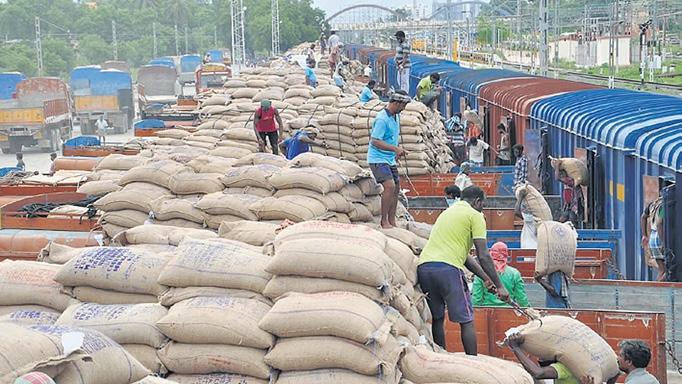
improvement, their settlements lack proper logistics parks, and their road connections are insufficient. Logistics trucking continuously faces a shortage of drivers who must receive proper welfare throughout their work shifts. A significant shortage of qualified truck drivers is hindering the industry’s ability to meet transportation demands. Also, fluctuations and increases in fuel prices directly impact operating expenses, affecting profitability.
While the industry remains largely fragmented with many small fleet owners, making it difficult to achieve economies of scale and implement industrywide solutions on one hand, the logistics operations of many-a-companies continue to embrace outdated systems not adopting to digital frameworks making it further difficult to have a uniformity across the board.
Addressing these challenges requires a multi-pronged approach. One, investing in infrastructure with improving road quality, expanding parking facilities, and developing efficient logistics hubs are crucial. Two, addressing driver shortages, improving driver working conditions, offering competitive wages, and implementing driver training programs can attract
and retain talent. Three, promoting technological advancements and adopting digital solutions for fleet management, route optimization, and payment systems can enhance efficiency.
Apart from this, experts in the industry are of the view that collaborating with law enforcement, implementing real-time tracking systems, and educating drivers on safety protocols can mitigate security risks, along with further ensuring fair practices, streamlining compliance procedures, and promoting transparency that would help improve the overall business environment.
On the condition of anonymity one of them said, “Supporting small fleet owners is of utmost important for they are the ones looking for a help. Providing access to finance, technology, and training can help them become more competitive. “
Capt Rohan Heranjal, Director of the Crew Service Centre, Bernhard Schulte Shipmanagement (India) Pvt Ltd, brings a wealth of experience to his role. With 14 years of sea time on tankers and 12 years of shore-based experience in marine operations, manning, and leadership, Rohan’s journey is marked by a unique blend of technical expertise and spiritual inclination. His shift to shore roles was also driven by the wish to be with his family and the dimension that a shore role experience adds to one’s overall personality. As a selfdescribed introvert, he prioritizes consistency, empathy, and purposeful leadership in his decision-making.
Rohan’s philosophy emphasizes the importance of emotional intelligence and integrity in leadership. He advises aspiring maritime professionals to stay curious, focused, and authentic, building technical competence while investing in essential soft skills like communication, adaptability, and crosscultural understanding. He also stresses the value of mentorship, encouraging individuals to seek guidance early and give back to the community once they’ve gained experience.
In a candid conversation with Delphine Estibeiro of Marex Media, Capt Heranjal opens up about his approach to leadership and building a culture of excellence.
A Chance Encounter…
I was drawn to the maritime industry by chance. I was studying mechanical engineering and came across an advertisement in the newspaper for cadet recruitment in the Merchant Navy. I had heard about the merchant navy from one of my relatives who was a captain on RORO vessels. The sheer scale and discipline it demanded, as well as the global exposure it offered early in one’s career, attracted me at that time. Sailing has instilled in me resilience, decision-making under pressure, an organized

Capt Rohan Heranjal
Director of the Crew Service Centre, Bernhard Schulte Shipmanagement (India) Pvt Ltd
way of living, and the value of teamwork — all of which laid the groundwork for my eventual transition into ship management ashore. My shift to shore roles was also driven by the wish to be with my family and the opportunity that a shore role experience brings into one’s overall personality.
The next decade will see accelerated digitalisation, decarbonisation, and a stronger focus on human sustainability. Bernhard Schulte Shipmanagement (BSM) is already aligning with these shifts — whether it’s through early adoption of data-driven decision-making tools, participation in green initiatives, or enhancing our seafarer support systems. We aim to be agile, adaptive, and anticipatory — not just responding to industry change, but influencing it through innovation and human-centric policies.
The manning industry per se is also poised for significant changes, with a strong emphasis on digitalisation, workforce development, crew welfare, innovative recruitment strategies, and sustainability. Stakeholders must proactively adapt to these trends to ensure a resilient and future ready maritime workforce.
My priorities centre around three pillars: competency, continuity, and care. I am lucky to have been entrusted with a ready structure and system here by my predecessor and colleague, Capt. Sankalp Shukla. We ensure the right people are matched to the right vessels through robust planning and talent pipelines. At the same time, we aim to offer more than just placements — we provide support ecosystems, open communication, and long-term career development for our crew. Our systems are data-backed, but our engagement remains deeply personal.
I believe excellence is a byproduct of ownership and belonging. I believe in an open culture where everybody’s point of view is heard before a decision is made. This encourages the team to bring ideas forward. Celebrating small wins and empowering cross-functional thinking keeps the culture vibrant. One of the initiatives that comes to mind is a simple information exchange circulated via email, summarising all the case studies and vast information that comes to my desk. This helps our large team across the India and Sri Lanka offices stay updated without the need for frequent meetings or excessive action points. Another initiative was the creation of our own in-house quality assurance subgroup within our team. These managers optimize systems and personnel to improve efficiency and deliver quality service to seafarers and owners.
We follow a continuous improvement approach that combines global best practices with localised insights. Having offices around the globe as well as many local branch offices within India, we are able to provide direct and efficient service to our seafarers. This, in turn, ensures compliance and training.
BSM has invested significantly in structured career planning tools, mentoring systems, and welfare partnerships. From shore-based psychological support to transparent promotion pathways, we are focused on holistic well-being. We have also launched virtual learning access, onboard wellness campaigns, and family engagement initiatives to bridge the sea-shore gap.
BSM strongly believes in the importance of employee development and provides robust career development programmes and training to all its seafarers. This is a combination of onboard and shore-based training.
Onboard training is delivered by the Onboard Training Superintendents and the ship’s staff, to develop competence on the job and to evaluate the effectiveness of shoredelivered MTC training.
The Master and Senior Officers are responsible for proactive crew competence development and always promote and encourage onboard training.
BSM places a strong emphasis on crew safety, mental health, and work-life balance, integrating these priorities into its operational and cultural framework.
BSM implements Behaviour Based Safety (BBS) initiatives both onboard and ashore, focusing on understanding human factors and promoting safe behaviours through targeted training and positive reinforcement.
Just Culture Philosophy: The company fosters a “just culture” that encourages reporting of mistakes without fear of punishment, distinguishing between honest errors and wilful violations. This culture prioritizes learning and continuous improvement over blame, enhancing overall safety and trust within the organization.
Mental Health:
24/7 Confidential Helplines: BSM provides roundthe-clock, multilingual helplines for both sea and shore employees, offering confidential support for mental health concerns through its collaborations with organisations such as the International Seafarers’ Welfare and Assistance Network (ISWAN).

BSM has a team of experienced in-house Mental Health & Wellness Training Superintendents delivering mental health awareness to help seafarers develop crucial skills in recognising signs of mental distress, providing psychological first aid, and understanding the significant role leaders play in promoting mental wellbeing.
BSM-India stands out for its depth of talent and experience as well as our determined attitude and our commitment to our customers. We have a ship owner mindset at the essence of all that we do.
The advantage of combining our global quality systems and processes with our local empathy through our various branches across India and their respective connections ensures our people, the seafarers, feel heard and not just managed.
Our decentralised decision-making, robust compliance, and adaptable staffing models give us an advantage, especially in a changing regulatory and intergenerational landscape.
At BSM and the whole Schulte Group, we uphold a set of core values that guide our operations and interactions within the shipping industry:
Independence: As a family-owned and private company, we maintain a financially sound position, ensuring our autonomy and stability. Any decision will be made not for the short win but for the sustainable continuation of the company.
Fairness: We treat our business partners and employees with fairness, honor our commitments, and uphold our good reputation.
Entrepreneurship: We encourage initiative and innovation, manage risks systematically, and promote teamwork and efficient business processes.
Responsibility: We prioritize safety at sea, environmental protection, and social responsibility.
Valued Employees: We reward good performance, embrace cultural diversity, and provide opportunities for continuous learning and development. Our decisions are made with a focus on sustainable growth and the wellbeing of our global workforce. It is our duty to ensure our employees safety and to build a culture of belonging and continuous growth to make sure that everyone can reach their full potential.
BSM has embraced digitalization as a cornerstone of its operational strategy, aiming to enhance efficiency, safety, and sustainability in the maritime industry.
Schulte Group member MariApps Marine Solutions is a maritime digital solutions company with a wide range of products and solutions on offer, from their flagship suite of digital solutions, smartPAL, to value-added products such as LiveFleet and several mobile applications.
With the help of its sister company MariApps, BSM has also introduced the Seafarer Portal and BSMPay, enhancing the onboard experience by providing easy access to essential documents, training schedules, and real-time financial transactions.
These Digital platforms provide seafarers with greater autonomy and access to resources, enhancing job satisfaction and retention.
The need is to view digitalisation not as a trend but as a transformation. It enables better planning, real-time decision-making, and enhanced safety monitoring. Our tools, like smart scheduling, crew performance dashboards, and digital training platforms, have increased efficiency and transparency. But as I have read somewhere, we should be clear that technology must serve people — not replace their humanity.
The ZET aims to decarbonize the logistics sector, reduce air pollution, enhance energy security, and contribute to achieving the country’s net-zero emissions target by 2070
India’s truck fleet is projected to quadruple by 2050, reaching approximately 17 million trucks, according to a report by Niti Ayog. This growth is driven by increasing demand for freight transport due to factors like urbanization, population growth, e-commerce, and rising income levels. Currently, road transport carries 70% of India’s freight, and this reliance is expected to continue as the truck fleet.
However, this expanding demand also creates negative environmental impacts due to heavy reliance on diesel-powered trucks. Although trucks account for only 3% of India’s road vehicle fleet, they contribute to 34% of CO2 emissions and 53% of particulate matter (PM) emissions.
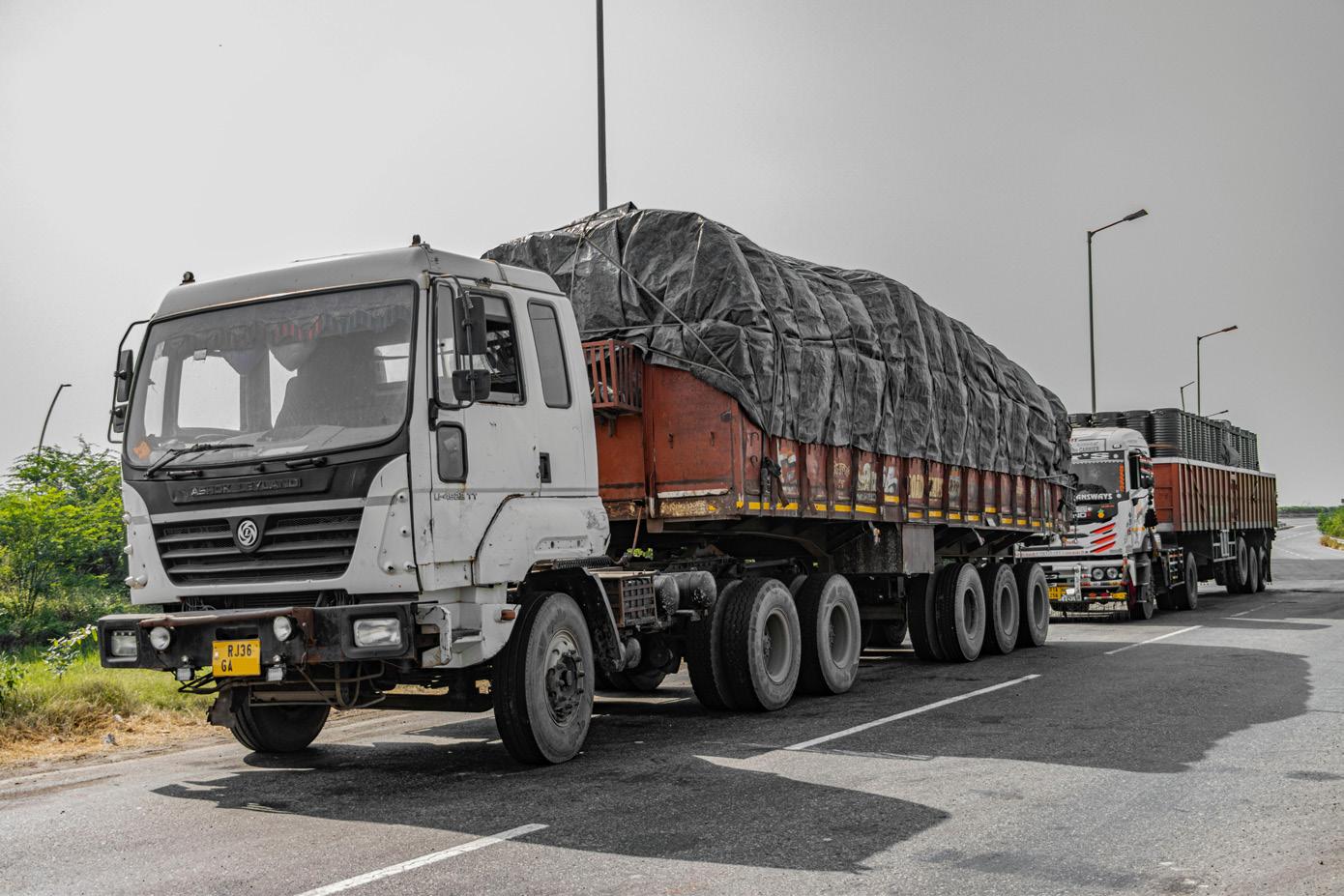
As experts in the industry say, “Zero-emission trucking (ZET) is about shifting from fossil fuel-based trucks to vehicles powered by clean energy sources like electricity or hydrogen.”
Zero-emission trucking (ZET) refers to the use of trucks that produce no tailpipe emissions, meaning they do not release pollutants directly into the atmosphere. This is typically achieved by using trucks powered by electricity (battery electric vehicles) or hydrogen fuel cells. ZETs are crucial for reducing greenhouse gas emissions and improving air quality in the transportation sector, which has traditionally relied heavily on diesel-powered vehicles.
ZET corridors are highway segments equipped with necessary charging or refueling infrastructure to facilitate ZET transport. Currently, 50% of India’s vehicle freight traffic travels along seven major corridors. Given the concentrated traffic along
these routes, dedicating ZET and infrastructure investment along these corridors effectively aggregates demand, improves charger utilization rates, and increases the overall economic viability of ZET projects.
Currently, a significant portion of India’s freight traffic, specifically 50%, travels along seven major highway corridors. These corridors connect key metropolitan areas and ports, including Delhi, Mumbai, Chennai, Kandla, Kochi, and Kolkata.
The seven major corridors are: i)Delhi-Mumbai: Connecting the capital city with the financial hub of Mumbai, ii) DelhiChennai: Facilitating trade between northern and southern India, iii) Mumbai-Chennai: Connecting two major port cities on either coast, iv)Kandla-Delhi: Linking the western port of Kandla with the northern capital, v)Kochi-Chennai: Connecting the southern port city of Kochi with Chennai, vi) Kolkata-Delhi: Connecting the eastern gateway city of Kolkata with Delhi, vii) Kolkata-Chennai: Connecting two major port cities in eastern and southern India.
The ZET (Zero-Emission Truck) corridor deployment in India refers to the government’s initiative to establish dedicated highway segments for the exclusive use of zeroemission trucks, primarily electric and hydrogen-powered, for freight movement. This strategy aims to decarbonize the logistics sector, reduce air pollution, enhance energy security, and contribute to achieving the country’s net-zero emissions target by 2070. The government has identified ten high-impact highway corridors as pilot routes for early ZET deployment. These corridors will serve as testbeds for developing a national ZET infrastructure network, including charging and refueling stations. The initiative is part of a broader effort to transition the trucking industry to zeroemission technologies, addressing the sector’s significant contribution to carbon emissions.
India’s ZET sector has just begun to take off, with ZETs making up 0.1% of total truck registration in 2024. For the ZET sector to grow at the pace needed to realise these benefits will require coordinated efforts from government ministries, financial institutions, and the private sector.
In 2024, the Government of India allocated ₹500 crore under the Prime Minister Electric Drive Revolution in Innovative Vehicle Enhancement (PM E-DRIVE) scheme to support the deployment of electric trucks. This presents an opportunity to harness momentum and accelerate market growth. As the ZET market starts to develop in India, one key strategy to drive and sustain ZET adoption is the establishment of dedicated ZET corridors.
ZET (Zero Emission Truck) corridors offer numerous advantages, including reduced air pollution and costs, enhanced energy security, and alignment with national priorities like “Atmanirbhar Bharat”. They also contribute to improved air quality, lower carbon emissions, and potential cost savings for logistics.
Understanding the distribution of freight traffic along these corridors is essential for developing targeted strategies to improve efficiency and reduce environmental impact. For example, investments in dedicated freight corridors, improved road infrastructure, and the adoption of cleaner transportation technologies like electric trucks can help optimize freight movement and reduce reliance on fossil fuels.
With India’s truck fleet projected to quadruple by 2050, reaching approximately 17 million trucks, Transition to zeroemission trucks (ZETs) which include battery electric trucks and fuel cell electric trucks is imperative to decarbonize this sector.
According to NITI Aayog, ZETs are projected to reach 85% of truck sales in India by 2050 and would offer these benefits:
a) Emissions reduction: As ZETs have no tailpipe emissions, ZET adoption can reduce 2.8–3.8 gigatons of CO2 emissions cumulatively through 2050.
b) Improved air-quality: ZET adoption has the potential to reduce PM and nitrous oxide pollution by approximately 40% by 2050, improving public health, especially for truck drivers.
c) Reduced logistics cost: Because of lower fuel and maintenance costs, ZETs can reduce logistics costs by 17% over a vehicle’s lifetime.
d) Energy security: Road freight accounts for more than 25% of oil imports annually. Switching to ZETs can displace up to 993 billion litres of diesel, resulting in savings of ₹116 lakh crore by 2050.
e) Industrial competitiveness: The transition to ZETs will create a cumulative demand of 4,000 gigawatt hours for domestically produced batteries by 2050. This shift will boost India’s competitiveness in the global battery and ZET manufacturing sectors, positioning the country as a leader in the transition to clean transportation.
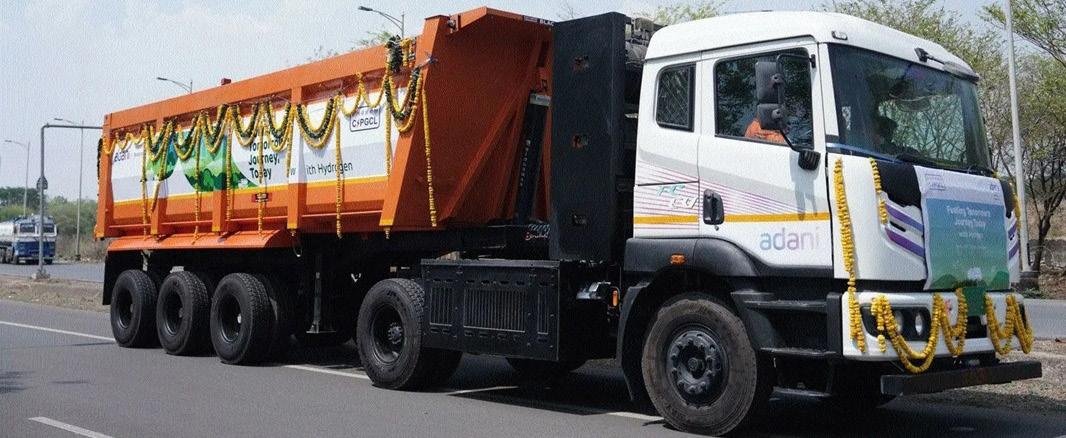
India’s First Electric Truck (e-truck) Incentive Scheme
On July 12, 2025, the Indian government launched its first electric truck (e-truck) incentive scheme under the PM E-DRIVE initiative, offering up to ₹9.6 lakh subsidy per vehicle. The scheme was announced by Union Minister H.D. Kumaraswamy and aims to promote clean freight transport and reduce pollution.
The scheme will offer financial incentives of up to ₹9.6 lakh per vehicle for electric trucks in the N2 (3.5 to 12 tonnes) and N3 (above 12 tonnes to 55 tonnes) categories. This amount will be directly deducted from the purchase price and reimbursed to OEMs via the PM E-DRIVE portal on a first-come, first-served basis.
To ensure durability and performance, electric trucks eligible under this scheme must come with a five-year or 5 lakh km battery warranty and a five-year or 2.5 lakh km warranty for the motor and vehicle. A major thrust of the scheme is to support the deployment of around 5,600 electric trucks across India. Notably, 1,100 of these have been earmarked for Delhi, a city battling serious air quality issues. An outlay of ₹100 crore has been reserved for this Delhi-specific push.
Industries that rely heavily on freight, like cement, steel, and port logistics, are set to benefit, as are OEMs like Tata Motors, Ashok Leyland, and Volvo Eicher, who are already active in the electric truck manufacturing space. The initiative is seen as a big boost for Make in India and Atmanirbhar Bharat in the EV segment. In a show of public sector leadership, SAIL (Steel Authority of India Limited) has pledged to procure 150 electric trucks over the next two years and aims to ensure that at least 15% of vehicles hired across its units are electric.
Globally, countries have recognised the benefits of ZET corridor deployment and are leveraging it as a key strategy to drive and solidify market growth. China has developed several ZET corridors equipped with battery swapping stations for heavy-duty trucks that enable trucks travelling on these routes to change battery packs in three to five minutes.
The United States released the National Zero-Emission Freight Corridor Strategy, aimed at deploying ZET infrastructure over 78,000 km of its freight highway network through phased investment and policy implementation. Implementation of this plan is expected to decarbonise the transport of more than 2.3 billion tons of goods by 2040. Similarly, the Northern Corridor Green Freight Strategy in Africa aims to create EVready corridors across Kenya, Uganda, Rwanda, Burundi,
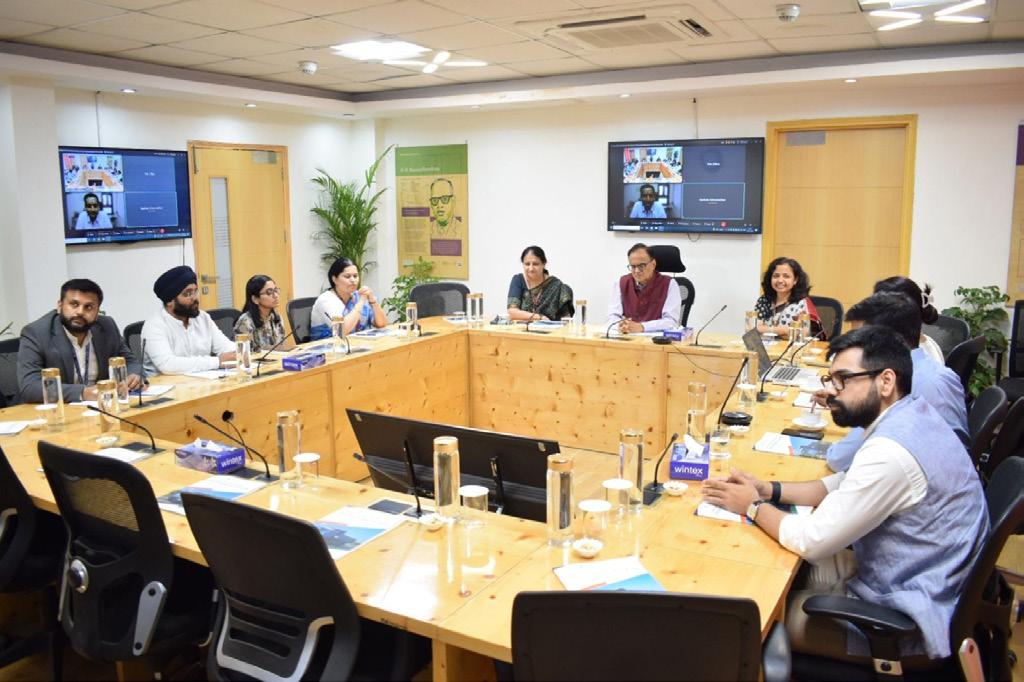
South Sudan, and areas of the Democratic Republic of Congo by 2030. The EU has also mandated charging stations with minimum output of 350 kilowatts every 100 km along its highways starting in 2025
Countries across the globe are stepping up measures to reduce greenhouse gas emissions from the transport sector to meet their targets and India is equally on its way.
In India, the Office of the Principal Scientific Adviser (PSA) to the Government of India has prioritized corridor development as one of the key strategies to support ZET growth.
An increasing number of ZET corridor pilots are also under development through public–private partnerships. Under the e-FAST (Electric Freight Accelerator for Sustainable Transport) platform, public and private partners have committed to deploying 550 electric trucks along key freight corridors in Gujarat and Maharashtra. ZET corridor pilots are also being deployed along the Bengaluru-Chennai and Chennai-Tiruchirappalli highways through collaborations among OEMs, charging infrastructure providers, policymakers, and civil society organisations. Several states have moved to prioritise corridor deployment to accelerate ZET adoption. For example, the Telangana ZET Accelerator initiative plans to identify and develop priority ZET corridors for concentrated ZET deployment.
India is well-positioned to become a crucial player in the inevitable transition to zero-emission freight vehicles. Deploying ZET corridors presents a significant opportunity for India to take the lead in ZET adoption while realizing its environmental, social, and economic benefits.
From a macroeconomic perspective, investments in rural road development help decentralize economic activity, reduce urban congestion, and promote inclusive growth
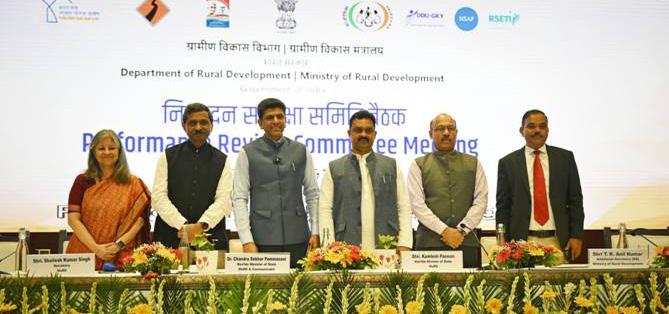
India has a massive road network, with a significant portion being rural roads. Rural roads are essential for facilitating access to markets, healthcare, education, and other essential services, leading to improved livelihoods and economic opportunities.
Despite progress, challenges remain in maintaining rural road quality and ensuring all-weather connectivity in remote areas. Phase IV of PMGSY aims to connect more habitations due to population increase, further expanding rural road access.
India’s rural road and logistics network is crucial for socioeconomic development, with the Pradhan Mantri Gram Sadak Yojana (PMGSY) program playing a key role in connecting villages and improving access to essential services. The vast majority of India’s road network is comprised of low-volume rural roads, and ensuring their upkeep is vital for agricultural growth and livelihoods.
Speaking at the first meeting of the Performance Review Committee of the Rural Development Ministry in New Delhi, Union Minister of State for Rural Development, Dr. Pemmasani Chandrasekhar highlighted logistics and road development as key to building a developed rural India.
Union Minister of State for Rural Development, Chandrasekhar, emphasised the vital role of logistics infrastructure in rural transformation during the Performance Review Committee meeting in New Delhi. He said achieving a ‘Viksit Gaon,’ a developed village, is foundational for realising a ‘Viksit Bharat’ by 2047, calling for quality roads, employment, and robust logistics systems.
Under the visionary leadership of Prime Minister Shri Narendra Modi and Cabinet Minister Shri Shivraj Singh Chouhan, we have made remarkable progress in rural development, the Minister said. “Over 7.56 lakh km of rural
roads have been built Under the Pradhan Mantri Gram Sadak Yojana (PMGSY).”, he added.
The Minister proposed setting up state-level road maintenance funds and adopting community-based monitoring systems to ensure sustainable connectivity.
He said, “We need to establish state-level road maintenance funds, implementation of communitybased monitoring systems and developing innovative financing models for sustainability.” He also further encouraged innovative financing for road upkeep and faster implementation. Chandrasekhar said, “The Ministry is not merely implementing schemes, but playing a central role in shaping the next phase of India’s growth story.”
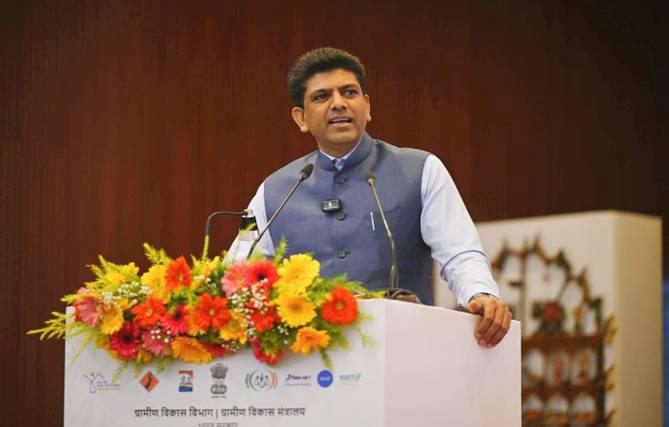
Rural roads are a vital part of India’s logistics network, serving as the first-mile and last-mile links that connect rural production centers with markets, warehouses, and processing units.
Bharatmala is one of India’s most extensive road highway development projects, surpassing the earlier National Highways Development Project. It plays a vital role in the National Logistics Policy, which aims to reduce logistics costs from 18% to 6% by improving the country’s transportation efficiency. The construction of 9,000 km of economic corridors is expected to connect manufacturing hubs, ports, and agricultural zones, boosting trade and economic growth.
The Pradhan Mantri Gram Sadak Yojana (PMGSY), launched in 2000 by the Government of India, has played a transformative role in strengthening rural infrastructure. The program aims to provide all-weather road connectivity to unconnected villages, with a focus on economic and social integration. As of recent years, PMGSY has connected over 97% of eligible habitations, building more than 700,000 km of rural roads.
From a macroeconomic perspective, investments in rural road development help decentralize economic activity, reduce urban congestion, and promote inclusive growth. Schemes like the Pradhan Mantri Gram Sadak Yojana (PMGSY) have shown measurable impacts in enhancing rural logistics efficiency. Ultimately, robust rural road infrastructure strengthens the entire supply chain by making it more resilient, responsive, and inclusive.
Under the Pradhan Mantri Gram Sadak Yojana (PMGSY), a key objective has been to ensure connectivity to all unconnected habitations with a population of 500+ persons in plain areas and 250+ in special category areas (NER & Hill States/ UTs, the Desert Areas, the Tribal areas and selected Tribal and Backward areas as per Census 2001). The entire target of 1,63,000 habitations has been met which has enabled service delivery to these habitations, improved the rural road core network and led to socio-economic transformation in these areas.
PMGSY-II was launched for upgradation of selected Through Routes and Major Rural Links (MRLs) and provide improved connectivity to growth centres. A total of 49,053 km length, out of a target of 50,000 km has been upgraded achieving the objectives of the programme.
PMGSY-III was launched in July 2019 for consolidation of 1,25,000 km from the targeted habitations Through Routes and Major Rural Links connecting habitations. A total of 6,96,620 facilities including 1,46,784 schools, 1,38,637 agricultural markets, 82,806 medical centres and 3,28,393 transport facilities have been provided improved connectivity so far under the scheme.
Phase IV of PMGSY aims to connect more habitations due to population increase, further expanding rural road access. This project is crucial for improving rural logistics by focusing on constructing and upgrading rural roads, which directly impacts the accessibility of markets and supply chains for farmers and small businesses.
In logistics-linked employment, MGNREGS has emerged as a pillar, creating 250 crore person-days annually with asset creation and infrastructure support. He advocated integrating
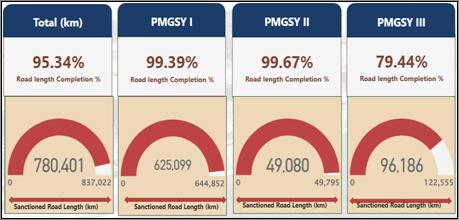
MGNREGS with other development schemes to maximise logistics outcomes.
The increasing adoption of online shopping and the growing integration of agricultural value chains in rural India are significantly boosting the demand for logistics services. With improved internet access and smartphone penetration, rural consumers are increasingly turning to e-commerce platforms for a wider range of products, from daily essentials to electronics. Simultaneously, farmers and agri-entrepreneurs are participating more actively in digital marketplaces, requiring timely transportation of inputs and farm produce to and from rural areas. This shift has created a strong need for efficient first-mile and last-mile delivery systems in villages.
Logistics companies of the likes of Infibeam and mVikarsha, Amazon, to name some, are now expanding their rural reach, investing in micro-warehousing, route optimization, and cold chain infrastructure. Companies are working to connect rural customers with e-commerce platforms, addressing issues of payment methods and internet access. Government initiatives like PMGSY and the National Logistics Policy further support this expansion by enhancing rural connectivity.
As rural markets become more digitally and economically active, logistics services will play a central role in enabling their growth and integration.
MMT
Union Minister Shri Nitin Gadkari inaugurated and laid the foundation stone for 9 projects in Sagara Town, Shivamogga, Karnataka, spanning 88 km, with an investment exceeding ₹2,000 crore. The newly inaugurated Sharavathi Bridge is poised to significantly improve connectivity between the Malnad and coastal regions, while also facilitating easier access to important pilgrimage centres such as the Sigandur Chowdeshwari and Kollur Mookambika temples.
The widening of the 47-kilometre-long Bidar–Humnabad section of NH-367 will substantially reduce travel time between the districts of Kalaburagi and Bidar. Restoration works undertaken in the Shiradi Ghat stretch of NH-75 are expected to ensure safe and uninterrupted traffic movement during the monsoon season, particularly along the vital Mangaluru–Bengaluru corridor.
The construction of a Road Over Bridge (ROB) at Shahabad and a bridge over the Kagina River on NH-50 will ensure seamless connectivity between Kalaburagi and Raichur. In addition, road safety enhancements on the Bengaluru–Mysuru AccessControlled Expressway will facilitate faster, safer, and more efficient travel between Karnataka and Kerala, while also reducing travel time and fuel consumption.
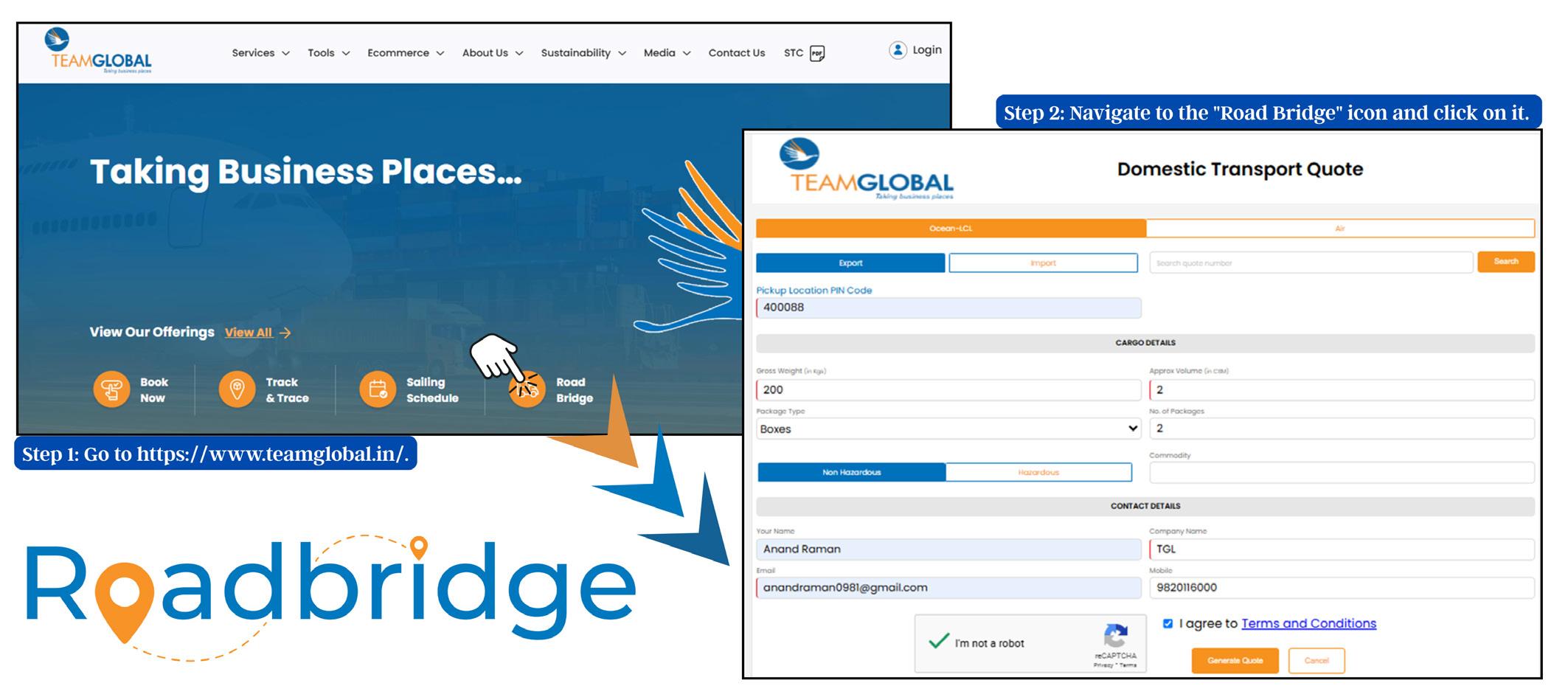
Teamglobal Logistics, a leading player in the Indian freight and logistics sector, has launched Roadbridge, a pioneering online transport rating tool designed to streamline domestic logistics for Indian EXIM trade. This innovative solution provides instant access to transportation costs, enabling businesses to make informed decisions quickly.
Roadbridge empowers Indian exporters and importers with instant online access to domestic transportation costs, facilitating informed decision-making with just a few clicks on www.teamglobal. in. This innovative tool covers all major gateway sea ports, including Nhava Sheva, Chennai, Kolkata, Mundra, Cochin, and Tuticorin, as well as ICDs across India and key gateway airports. In partnership with Delhivery, India’s leading LTL service provider, Roadbridge ensures seamless first-mile and last-mile delivery to and from these strategic locations.
Roadbridge offers a range of benefits:
• No Login Required: The tool is fully open and accessible to all Indian EXIM customers, without the need for user registration
• Instant Quotes: Users receive transport rates within seconds by simply entering basic shipment details
• Automated Email Support: Each quote is instantly sent to the user’s email, ensuring easy record-keeping
• Book with Ease: Users can book shipments immediately or retrieve quotes later through OTP verification
• Secure Access: OTP-based security ensures only the requesting user can view and manage their quotes
• Competitive Pricing: Roadbridge ensures highly competitive rates without compromising on service quality
• Neutral Service: Advantage of
Teamglobal is its neutrality in providing Freight services
• Track and Trace: Going forward the customers will also get to track the status of their shipment on Teamglobal website
According to Mr Vivek Kele, Director of Teamglobal Logistics, “Our goal with Roadbridge is to simplify domestic logistics using technology that’s fast, secure, and easy to use. This tool reflects our continuous effort to enhance transparency and responsiveness in logistics solutions for Indian businesses.”
The launch of Roadbridge marks another milestone in Teamglobal’s journey to revolutionize logistics in India. As a tech-driven company, Teamglobal remains committed to offering innovative, efficient, and scalable logistics solutions to support India’s growing role in global trade.

Shipping industry uses AI and ML technology to change business operations while making them run better with lower costs and ecofriendly procedures. This technology shows success in logistics planning and maintenance forecasts while helping companies handle their freight movement better and make their operations safer specifically. AI and ML systems help companies make better decisions while using resources better and avoiding delays which both improve the daily functions of shipping operations. However, the widespread adoption of AI and ML in the industry still faces significant challenges. The sector cannot fully embrace AI and ML solutions because organizations must pay big expenses and lack AI
professionals while their staff resists new technology. Strong interest exists in improving business growth through AI and ML usage but comprehensive cost savings solutions must develop along with worker training to ensure effective adoption. Shippers should evaluate how ML technology can support environmental protection goals in shipping operations.
Companies use AI and ML because these methods automatically boost decision quality and make their operations more effective. AI and ML tools is being helping healthcare, finance, production, and distribution sectors to understand their big data to enhance their performance and lower expenses
while improving customer engagement. Organizations that depend on databased operations have discovered that these systems boost their efficiency and make their operations safer while helping to introduce new ideas.
Our industry is a backbone of global trade, responsible for the transport of goods between countries and continents. It accounts for more than 80% of world trade by volume and remains crucial in connecting economies, facilitating the movement of raw materials, consumer goods, and industrial products. The sector includes various types of vessels, such as container ships, bulk carriers, tankers, and cruise ships, each serving different markets and needs. Ports,
terminals, and shipping companies operate in a highly competitive and complex environment, where efficiency, safety, and cost-effectiveness are paramount. The industry’s size and scope are vast, with major global shipping routes connecting all regions of the world. A key feature of the industry is the fleet, which includes both privately-owned and publiclylisted companies that manage vast numbers of ships. Major players in the shipping industry include Maersk, MSC, and CMA CGM, with these companies handling the bulk of global cargo shipments. Despite its scale, the industry faces numerous challenges, particularly around cost pressures, safety concerns, and environmental impact, all of which are currently driving change and innovation.
• Cost: The rising costs of fuel, maintenance, and labor are a significant burden for companies. Fuel prices fluctuate, and the need for efficient energy use has increased. Maintenance costs are also high, particularly for older ships that require frequent repairs. These costs directly affect the bottom line, making it essential to find ways to operate more costeffectively.
• Efficiency: The industry is under constant pressure to improve operational efficiency. Factors like port congestion, delays, and inefficient route planning can cause significant financial losses. Optimizing fuel consumption and improving the flow of goods through ports is crucial for reducing operating costs and improving service delivery. With the volume of global trade growing, managing this increasing traffic while maintaining efficiency becomes even more challenging.
• Safety: Safety is a top concern
in the shipping industry, where accidents, collisions, piracy, and hazardous materials can lead to significant losses in both human and financial terms. Companies must ensure the safety of their crews, cargo, and vessels, while also adhering to international regulations and standards. Despite improvements in safety measures, the industry remains vulnerable to threats, such as cyber-attacks, and the complexity of navigating in adverse weather conditions further complicates the situation.
• Sustainability: The industry is a major contributor to global carbon emissions, with ships burning heavy fuel oil and emitting greenhouse gases. With growing global awareness about climate change and stricter environmental regulations, there is increasing pressure on the industry to adopt sustainable practices. This includes reducing emissions, implementing cleaner fuel technologies, and finding ways to minimize waste and energy consumption.
Several key applications using AI and ML technologies that boost safety standards and efficiency while lowering operational costs. We can use these applications for Predictive maintenance, learn weather patterns, analyse traffic flow, track fuel usage, determine delivery speed, cuts fuel expenses, manage cargo supply chains, discovers how much cargo should be loaded effectively, shows best places to load particular commodity, maintain effective inventory data and monitor shipment.
• Automation and AI: These are transforming key aspects. Autonomous vessels are a significant development, with companies exploring the use of drones and
robotic systems for cargo handling and vessel navigation. AI is also being used to optimize route planning, considering factors such as weather, sea conditions, and fuel efficiency. This not only reduces fuel consumption but also shortens delivery times and improves operational efficiency.
• ML and Predictive Analytics: These are helping companies predict when maintenance is needed, thus preventing costly downtime and extending the life of ships. By using historical data and realtime sensors, shipping companies can anticipate equipment failures, optimize ship maintenance schedules, and prevent emergency repairs. Predictive analytics is also being used for cargo management, where it helps in better predicting demand, minimizing cargo space wastage, and reducing excess inventory.
• Digitalization of Shipping Operations: These are improving the overall management of shipping logistics. Electronic tracking systems have become standard in shipping, allowing cargo to be tracked in real time from the point of origin to the final destination. This enhances transparency and reduces the risk of errors, delays, or theft. Port operations are also becoming more digital, with automated systems for managing ship arrivals, loading/unloading, and inventory tracking, significantly improving throughput.
• Fuel Efficiency and Sustainable Technologies: The pressure to reduce emissions has led to significant investments in fuel efficiency and alternative energy sources. Companies are increasingly adopting technologies like wind-assisted propulsion systems, which use wind power
to reduce fuel consumption. Additionally, some companies are exploring the use of LNG (liquefied natural gas) as a cleaner alternative to traditional fuels. Research into renewable energy sources, such as solar panels on ships, is also underway, aiming to make shipping more environmentally friendly.
• Blockchain for Transparency and Efficiency: This is being used to improve transparency and efficiency in the shipping industry, particularly in cargo management and documentation. By using blockchain, companies can create immutable records for transactions and cargo shipments, which helps reduce fraud, streamline customs processes, and improve communication between stakeholders in the supply chain.
• Cybersecurity and Safety Innovations: With the increasing digitization of shipping operations, cybersecurity has become a priority. Cyber-attacks can disrupt operations, steal sensitive data, or compromise safety systems. Shipping companies are adopting advanced cybersecurity measures to protect their systems and prevent breaches. Additionally, AI and machine learning are being used to enhance safety on board vessels by analyzing data from sensors to detect potential hazards, such as mechanical failures or environmental risks.
Maersk represents one of the biggest shipping companies worldwide which applies AI and ML systems throughout its business operations. The company applies ML algorithms to create superior shipping routes with lower fuel requirements. Uses weather information combined with traffic and port conditions to change shipping paths during transit which increases
productivity and saves money. The ships operated by Maersk run sensors that gather data for AI systems to predict when scheduled maintenance will keep their operations running smoothly.
MSC demonstrated AI technology to increase the reliability of its shipping process. Activities and movement data guides MSC AI programs to identify planned container delivery times at every port. This helps the company better arrange cargo move-ins and move-outs that reduce dock delays and increase shipping speed. Through AI technology the industry tracks potential cargo theft risks to defend shipments as they move across the supply chain.
With operations serving as the busiest international port Rotterdam applies AI to boost daily operational operations. The port utilizes AI technology to study ship activity and plans sailing schedules that reduce wait times and Jetstream blockage. AI works side by side with people to automate warehouse tasks such as moving containers through advanced robot technology. Using AI helps fuel reductions and lowers carbon emissions at ports which support our sustainability objectives.
As a Finnish tech company Wärtsilä developed Smart Marine Ecosystem to optimize ship operations through an AI. The platform collects data with ML methods to track and control how ships use energy and share operating effectiveness tips. The system shows exactly when engine and propulsion equipment need service before problems develop. The system extends equipment life and decreases operating costs at the same time.
Carnival Corporation manages fuel efficiency better for its whole cruise fleet by employing machine learning tools. AI technology improves fuel efficiency and cuts emissions to help
the company reach its sustainability goals. Advanced computer systems are transforming how the shipping business operates.
Understand the level of familiarity with AI & ML. Identify the perceived importance of AI and ML in improving operational efficiency. Recognize which areas are expected to benefit. Explore whether AI and ML will bring significant changes in the next five years. Identify the biggest challenges faced in implementation. Gauge the likelihood of adoption. Determine which AI/ML applications are considered most impactful. Evaluate the potential of AI and ML to help reduce environmental impact. Understand the opinions regarding the pace of AI and ML adoption. Assess the level of confidence in AI and ML’s ability to enhance safety and risk management. Explore the belief about AI and ML creating new job opportunities. Recognize the factors expected to drive the future growth of AI and ML.
Despite the promising potential of AI and ML, the international shipping industry is still in the early stages of fully integrating these technologies. Many companies face challenges in terms of technological readiness, high implementation costs, and the need for skilled personnel to operate these advanced systems. We need to explore the current state of AI and ML adoption in the international shipping, identify barriers to their widespread implementation, and propose strategies for overcoming these challenges. By doing so, it seeks to provide a comprehensive understanding of how these technologies can be leveraged to transform the industry and drive future growth. AI and ML’s chance to develop fresh job openings in
shipping operations. Digitalization and automation primarily lead to job loss by replacing current positions, but can result in brand-new employment opportunities. We need to analyze how professional experts see the potential developments of AI and ML systems in shipping.
Numerous survey results on the use of Artificial Intelligence (AI) and Machine Learning (ML) in the international shipping provide some interesting insights into the perceptions and concerns of industry professionals. When we discuss familiarity with AI and, there is a moderate awareness of their potential applications, a portion of the industry is actively engaged and still there is a significant knowledge gap that could impact the adoption of these technologies within the sector. When it comes to the importance of AI and ML in improving operational efficiency in international shipping, there is the growing recognition of AI and ML’s potential to optimize various operational processes in shipping. In terms of the areas that would benefit most from AI and ML, route optimization and planning would see the greatest impact. This is understandable, as AI can analyze vast amounts of data to determine the most efficient routes for ships, helping to save fuel, reduce emissions, and improve overall delivery times. Predictive maintenance is another key area for improvement, as AI can help anticipate equipment failures before they occur, minimizing downtime and repair costs. Cargo tracking and management, which is critical for ensuring the timely and accurate delivery of goods. Customer service and support to be the most impacted by AI and ML. The cost of implementing AI and ML remains a major concern for many in the shipping industry. This is highlighting the financial barriers that companies must overcome to
integrate these technologies into their operations. There is some resistance to change from employees and due to data privacy and security concerns also.
Use of AI & ML holds immense potential for transforming the sector by improving operational efficiency, reducing costs, and enhancing overall service delivery. There is a considerable gap in knowledge that needs to be bridged. Companies can address this by investing in educational programs and training for their employees to enhance their understanding of these technologies and their potential benefits. Such initiatives could be pivotal in building a workforce that is not only familiar with AI and ML but also capable of applying them in innovative ways that drive business growth. Companies can take a phased approach to AI and ML adoption, starting with pilot projects that focus on high-impact areas. Collaboration also emerges as an important strategy for overcoming the challenges associated with AI and ML adoption. By partnering with tech firms, AI specialists, or even other shipping companies, businesses can pool resources and share the costs of technology implementation. Collaborations can also help businesses gain access to specialized expertise,
which is particularly important given the current shortage of skilled professionals in the field. Companies need to invest in robust data collection and management systems. Implement strong data privacy and security measures to ensure that sensitive information is protected. Data breaches are a constant concern, ensuring the security of customer and operational data is not just a regulatory requirement but also an essential factor in maintaining trust with customers and partners. Recognize the environmental benefits that these technologies can offer. Companies, under increasing pressure to meet global sustainability goals. Retraining their workforce and providing new roles in areas such as data analysis, AI management, and system integration. This would help ensure that employees remain relevant in the changing job market and that the benefits of AI and ML are shared across the industry, including with the workers who are most affected by these changes. AI and ML implementation must be carefully managed to ensure it aligns with the company’s long-term goals.
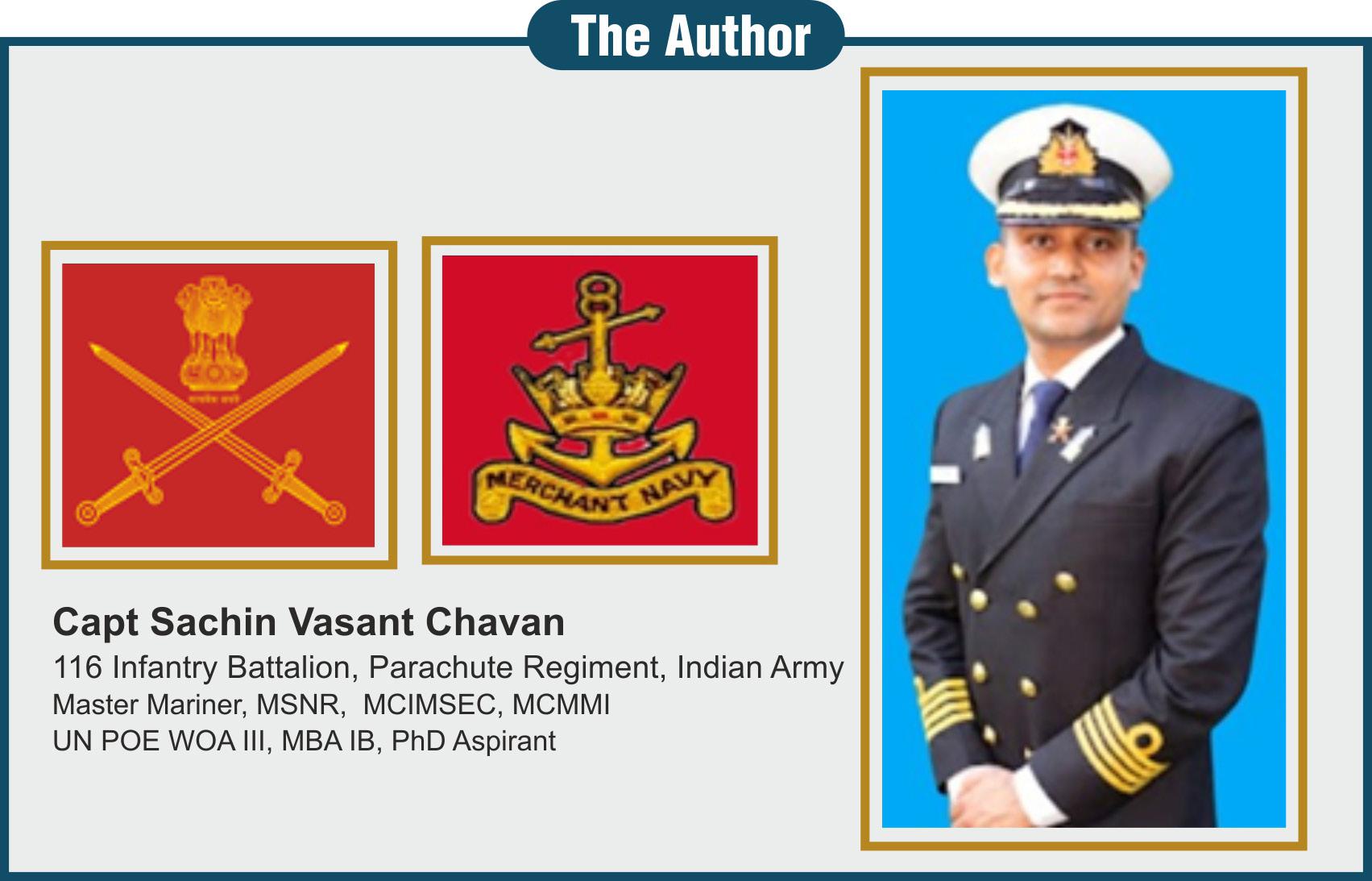
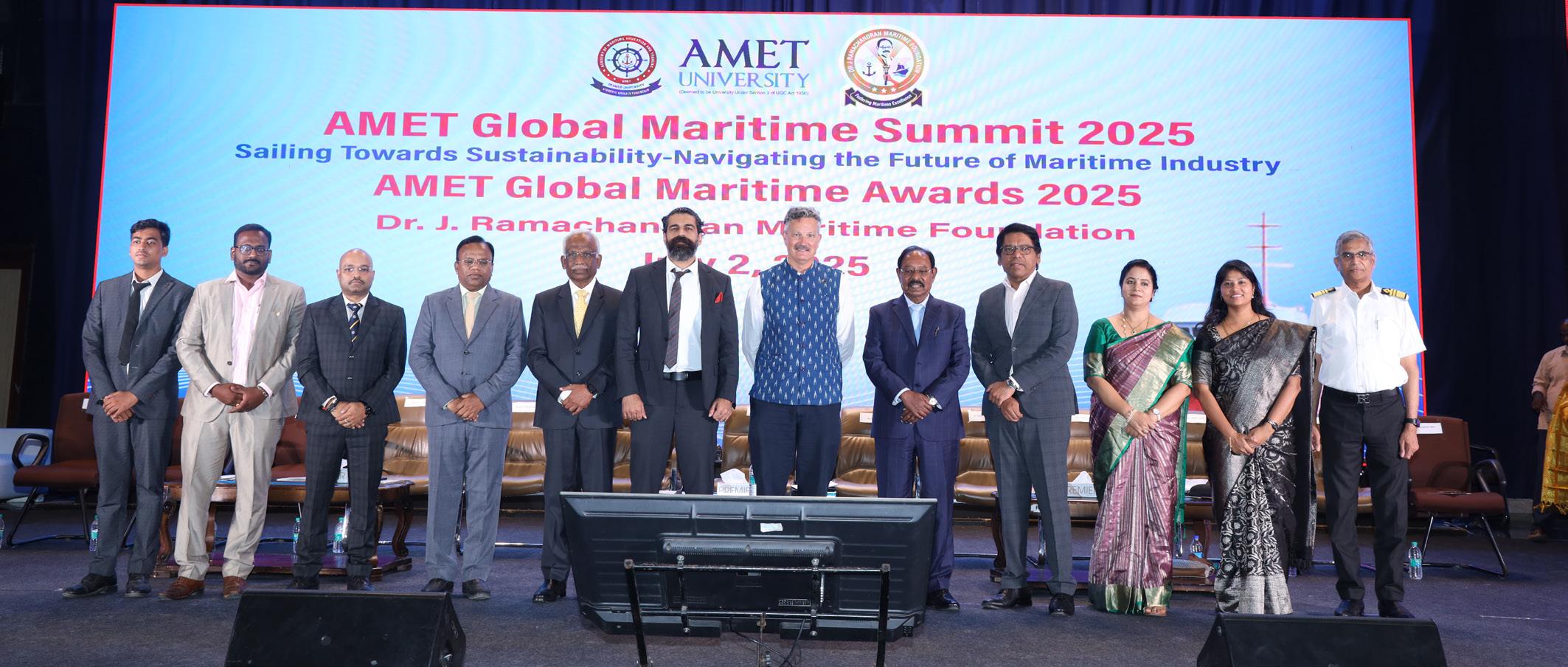
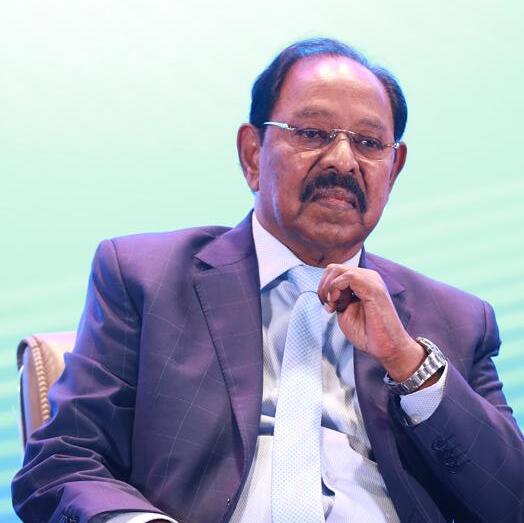
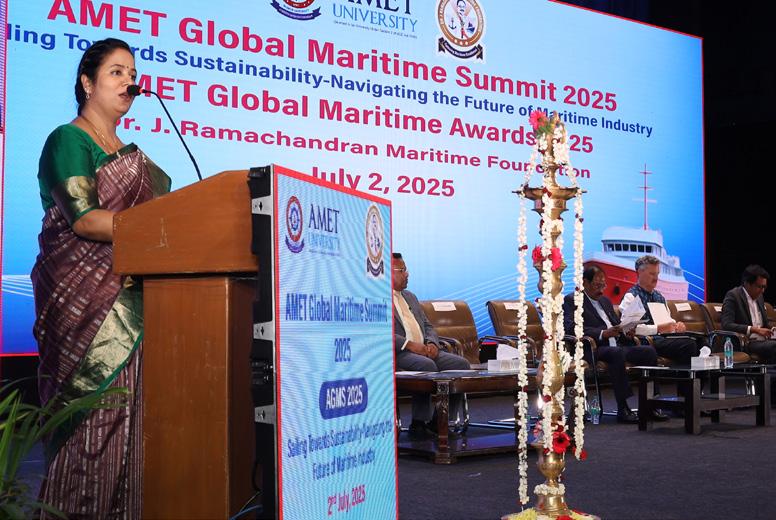
The bustling port city of Chennai became a hub of global maritime thought and leadership as the AMET Global Maritime Summit 2025 (AGMS 2025) and AMET Global Maritime Awards 2025 (AGMA 2025) held on July 2 2025, at the Anna Centenary Library Auditorium.
Hosted by the Dr. J. Ramachandran Maritime Foundation in collaboration with AMET University, this landmark event brought together more than 1,200 delegates from over 15 countries ,affirming its growing stature as a critical platform for maritime discourse, education, and sustainability.
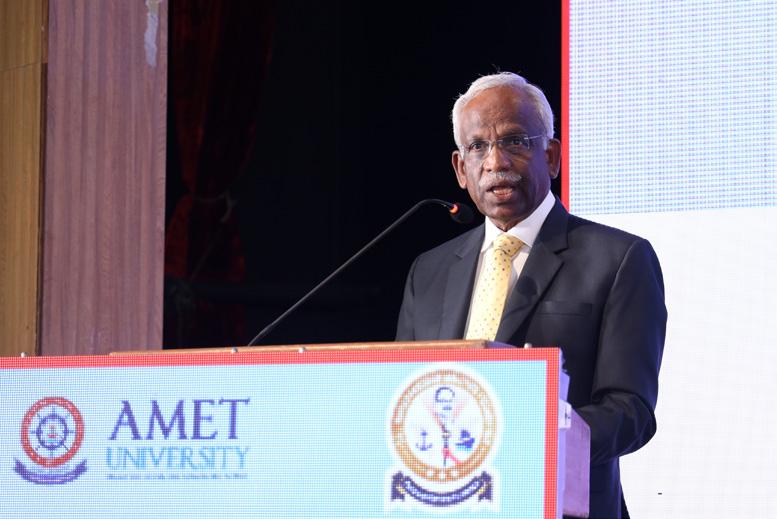
This year’s summit theme, “Sailing Towards Sustainability –Navigating the Future of the Maritime Industry”, resonated deeply across all sessions and discussions. AGMS 2025 addressed urgent priorities such as green shipping, digital transformation, seafarer wellbeing, maritime education , and ocean stewardship , with a clear alignment to United Nations Sustainable Development Goals, particularly SDG 4 (Quality Education) and SDG 13 (Climate Action).
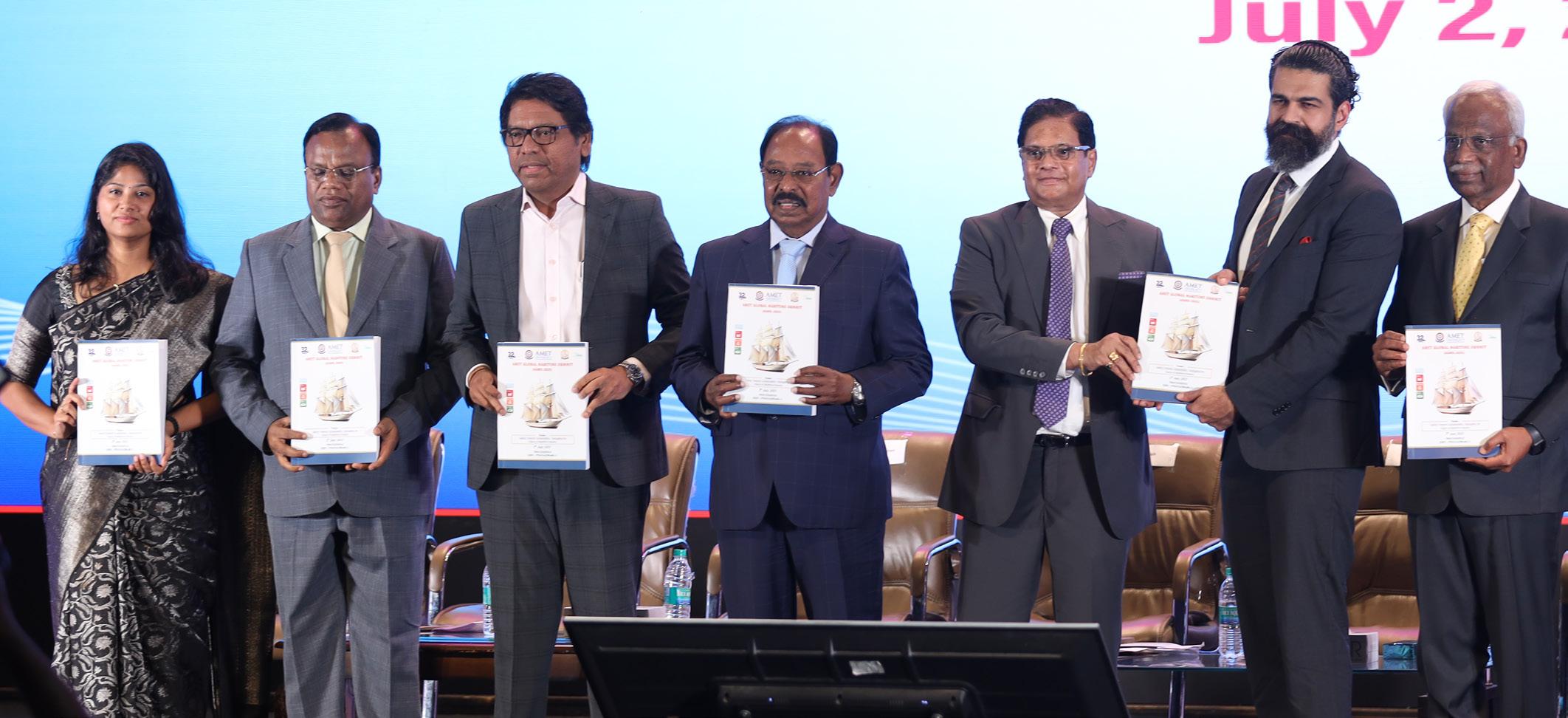
The inaugural ceremony began on a solemn and traditional note with Tamil Thai Vazhthu and invocation. The welcome address by Capt. K. Karthik, Principal, AMET Institute of Science and Technology, set the tone by highlighting AMET’s pivotal role in shaping maritime academia and industry collaborations.
In his presidential address,Dr. J. Ramachandran,Founder and Chancellor of AMET University, reaffirmed AMET’s vision to lead maritime education into a future grounded in sustainability and innovation. He spotlighted strategic partnerships such as the Maersk Centre of Excellence and the newly signed MoU with Arizona State University for joint academic programmes, including a 4+1 UG model and dualcampus MBAs focused on maritime management and AI.
Delivering the Chief Guest Address, Capt.Mohan Naik,Director, Dynacom Tankers Management Pvt Ltd, praised AMET’s transformative contributions to Indian maritime training. Stressing the importance of integrating sustainability at every operational level—from methanolfueled vessels to ship recycling—he emphasized that training institutes must bridge technological skill gaps while also championing seafarer mental health.
Capt. Karan Kochhar, Head of Marine People (Asia), Maersk Fleet Management, served as the Guest of Honour and paid tribute to AMET’s long-standing partnership with A.P. Moller Maersk. His address centered on the importance of empowering cadets, who he called “the future stewards of the seas,” urging them to “stay humble, stay resilient.”
Dr. Rajesh Ramachandran, President of AMET University and Chairman of the Dr. J. Ramachandran Maritime Foundation,
delivered a special address emphasizing the delicate balance between technology, environment, and social inclusion needed to steer the maritime sector toward a resilient future.
A hallmark of AGMS 2025 was its intellectually stimulating panel discussions and technical sessions .
The first panel, moderated by Ms. Harjeet Kaur Joshi , former CMD of Shipping Corporation of India, tackled the role of humanities and soft skills in creating more competent officers. Panelists called for integrating maritime psychology, empathy, and communication training to promote operational harmony and mental well-being at sea.
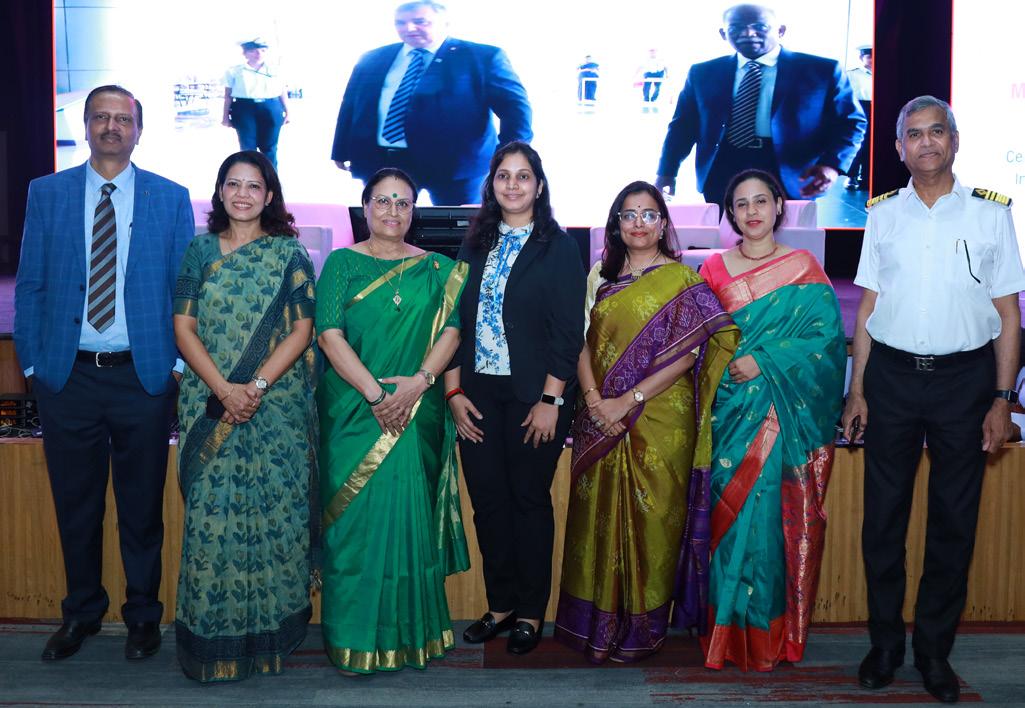
The second panel, led by advocate Ms. S. Priya of Venki’s Law, Mumbai, delved into legal recourses for harassment at sea. Through real-life case studies, panelists emphasized the urgent need for psychological safety, policy-driven interventions, and legal awareness within the maritime ecosystem.
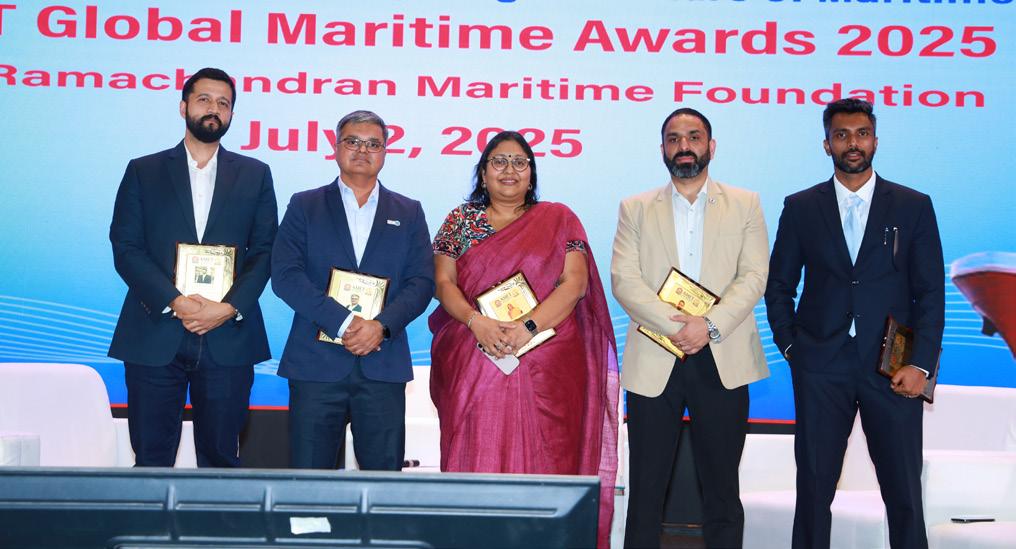
In an innovative twist, the third panel was co-led by cadets from AMET under the guidance of C/E Sridhar V., CTO, Maritime EdTech Academy. They debated the theme “Can Social Media Save the Seas?”, exploring the dual nature of digital platforms in maritime life—from creating awareness to the pitfalls of misinformation and distraction.

Four parallel technical tracks showcased over 120 research papers from global scholars, reflecting cutting-edge work in areas such as:
Maritime Education for a Sustainable Future
Digital Transformation & Smart Operations
Innovation & Sustainability in Maritime Practice Blue Economy, Ocean Health & Policy Integration
Celebrating Global Maritime Excellence
The summit culminated in the AGMA 2025 Awards Ceremony , presided over by Mr. David Eggleston , Deputy Consul-General of Australia in Chennai. He lauded India’s maritime legacy and emphasized Indo-Australian cooperation in maritime education, clean energy, and tourism.
The prestigious AGMA Awards , instituted in memory of Dr. Naesey J. Ramachandran, recognize global excellence in maritime leadership, innovation, and education. The Jury Panel, led by Prof. Gabriel Raicu (Romania) and Dr. Stephen Hurd (Australia), upheld a rigorous and transparent selection process.
AGMA Maritime Leadership Award (FounderChancellor’s Nomination)
Capt. Anmol Shrivastava , Ship Pilot, JNPA, Mumbai, was honored for saving 57 lives during a ferry tragedy — a heroic act that captured the spirit of maritime bravery.
AGMA Maritime Leadership Award 2025
Dr. Boyan Mednikarov , Bulgaria, for transformative leadership in naval education.
AGMA Young Maritime Leadership Award
Mr. R. S. Lakshmi Balaji , Chennai, for pioneering the use of emerging tech in maritime training.
AGMA Maritime Excellence Award
CUST Euromed , Italy, for excellence in maritime education and sustainable logistics.
AGMA Maritime Innovation Award
Dr. Karthik Ramachandran, Chennai, for applying marine biotechnology to promote sustainable aquaculture.
Dr. Col. G. Thiruvasagam,Provost, AMET University, presented the official Jury Report, and Dr. T. Sasilatha ,Technical Session Coordinator, summarized the conference’s academic achievements, noting the diversity and depth of research presented.
In his commendation address, Dr.J.Ramachandran expressed deep gratitude to the international jury, speakers, and participants. He emphasized the role of AGMS and AGMA as living extensions of his educational legacy, dedicated to nurturing global maritime excellence and responsible leadership. He also appealed for enhanced opportunities for Indian students to study in Australia, highlighting ongoing collaborations with Monash University in AI and data science.
AMET University, Chennai, is India’s first maritime university and a pioneer in maritime training, research, and global partnerships.
The Dr. J. Ramachandran Maritime Foundation is committed to advancing sustainable maritime education, policy innovation, and leadership development through platforms like AGMS and AGMA.
As the waves of the maritime world shift towards sustainability and innovation, AGMS and AGMA 2025 served as a lighthouse—guiding the industry toward a resilient, inclusive, and future-ready horizon.
- Dr. Radhika Vakharia
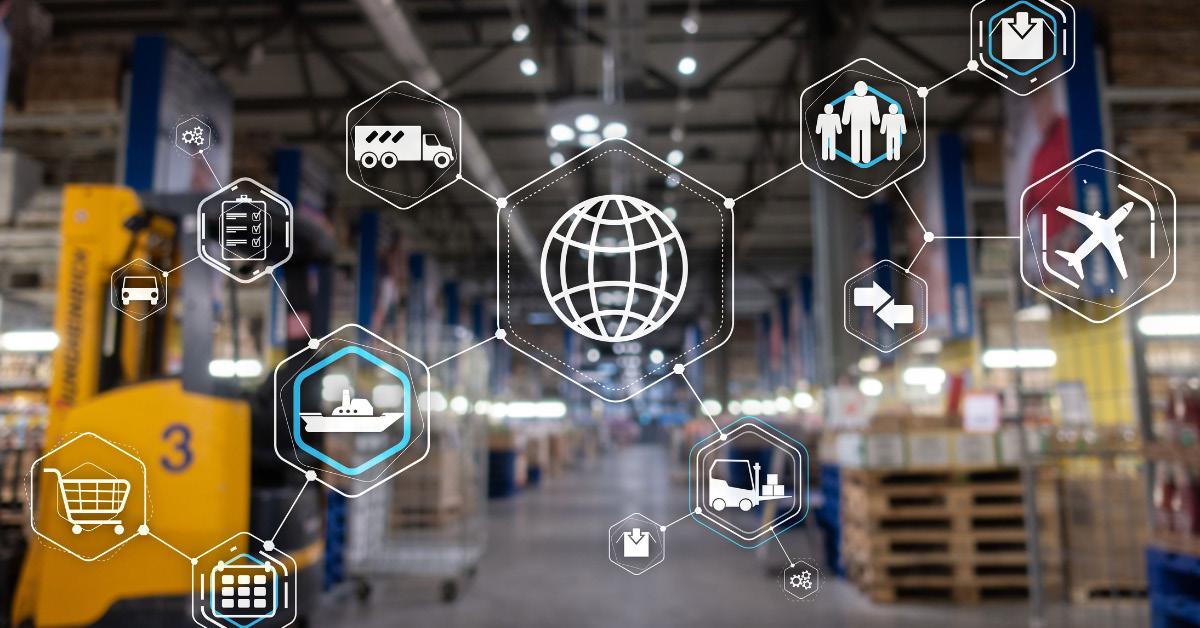
In today’s interconnected and fast-moving world, logistics plays a vital role in ensuring that goods and services flow smoothly from origin to destination. From the moment a product is manufactured to the second it reaches a consumer’s doorstep, logistics professionals are behind the scenes making it happen. As global trade, e-commerce, and technological innovation continue to expand, logistics is emerging as one of the most
dynamic and future-proof career fields — and here’s why.
An Industry That Keeps the World Moving Logistics is the backbone of the global economy. It encompasses everything from transportation, warehousing, and inventory management to supply chain planning and last-mile delivery. Every industry — from healthcare to retail to construction — relies on logistics to function. This wide-reaching impact means that a career in logistics offers stability, relevance, and high demand across sectors.
Whether it’s managing global shipping routes, ensuring medical supplies reach hospitals, or optimizing online deliveries, logistics professionals are essential — even more so in times of crisis, such as the COVID-19 pandemic, when supply chains became critical
to public health and economic survival.
With the rise of e-commerce, globalization, and digital supply chains, the demand for skilled logistics professionals is rapidly increasing. According to the U.S. Bureau of Labor Statistics, jobs in logistics are projected to grow faster than average over the next decade. The sector’s transformation is propelled by flagship initiatives like the National Logistics Policy (NLP) (launched September 2022) and the PM Gati Shakti Master Plan, designed to integrate rail, road, air, and waterways into a seamless multimodal network. Major infrastructure investments under the Dedicated Freight Corridors (DFC)—with the Eastern Corridor fully operational and the Western Corridor nearing completion—are increasing railfreight’s share and cutting transit times significantly. Simultaneously, portled initiatives like Sagarmala, and roadway programs under Bharatmala, support multimodal connectivity and reduce logistics costs.
India’s sustainable, green warehousing footprint is expected to quadruple—from 65 million sq ft in 2024 to 270 million sq ft by 2030 per JLL India.
The logistics automation market, worth $1.88 billion in 2024, is forecast to expand to $8.07 billion by 2033 (CAGR 15.7%).
Quick commerce is emerging as a major employer—forecasted to create up to 550,000 jobs by 2026 in last-mile and operations roles.
In emerging markets, the logistics sector is expanding rapidly as infrastructure develops and cross-
border trade intensifies. This creates a global landscape of opportunity for those with the right skills and mindset.
One of the most appealing aspects of a logistics career is the variety of roles available. You can start as a logistics coordinator or inventory analyst and work your way up to roles like supply chain manager, transportation director, or even chief operations officer (COO). Career options span:
• Warehouse and distribution management
• Transportation and fleet coordination
• Procurement and sourcing
• Import/export and trade compliance
• Supply chain technology and data analytics
• Sustainability and green logistics
Technology-Driven and FutureFocused
Logistics is no longer just trucks, ships, and warehouses — it’s a high-tech industry. Companies are adopting artificial intelligence (AI), machine learning, robotics, blockchain, and the Internet of Things (IoT) to create smarter, faster, and more efficient supply chains. Professionals who embrace technology can thrive in roles involving automation , predictive analytics , and digital transformation
. If anyone is interested in the intersection of tech and real-world application, logistics offers exciting possibilities.
Modern logistics isn’t just about efficiency — it’s also about sustainability, resilience, and innovation. As climate change and ethical sourcing become more important, logistics professionals are helping companies
reduce emissions, lower waste, and create responsible supply chains.From designing eco-friendly delivery routes to managing crisis response during natural disasters or pandemics, logistics careers can have a meaningful impact on society and the environment.
Logistics is ideal for people who are:
• Strategic thinkers and problem-solvers
• Interested in global business and trade
• Detail-oriented and organized
• Comfortable with technology and data
• Adaptable and capable of working in fast-paced environments
India’s logistics sector is undergoing a rapid transformation—fueled by strong market demand, major policy reforms, infrastructure upgrades, and digital innovation. With projected growth rates in the 8–9% range and substantial expansion in warehousing, freight corridors, and automation, the sector holds immense potential for businesses, professionals, and investors looking ahead to 2030 and beyond. Logistics is more than just moving goods — it’s about connecting people, economies, and ideas across the globe. With endless opportunities, a strong growth trajectory, and a future focused on innovation and sustainability, logistics is a highly prospective career for the modern professional.As industries evolve and global challenges become more complex, logistics will remain essential — and so will the people who make it all work.
Whatever your business, you need a robust supply chain that is the right fit with no slips, busts or disruptions. Unzip a world of possibilities with GAC India‘s logistics resources, expertise and network to close the gaps and open up your business.

GAC Shipping (India) Private Limited
Main office
GAC House, P.B. No. 515, Subramanian Road, Willingdon Island, Cochin 682 003, India
E: pricing.india@gac.com | T: +91 484 266 8372
CIN: U63090KL1983PTC003733
Bengaluru
Mr Gopala Krishna
T: +91 96863 55008
E: gopala.krishna@gac.com
Chennai
Ms Ranjani Kumar
T: +91 98846 62852
E: ranjani.kumar@gac.com
Cochin
Mr Swaraj Joseph
T: +91 79943 33270
E: swaraj.joseph@gac.com
Delhi
Mr Jaya Shekar
T: +91 98992 05424
E: jaya.shekar@gac.com
Kandla
Mr Jatin Joshi
T: +91 98251 58583, E: jatin.joshi@gac.com
Kolkata
Mr Dipayan Hore
T: +91 99036 27997
E: dipayan.hore@gac.com
Mumbai
Mr Sanket Chandwade
T: +91 83697 44069
E: sanket.chandwade@gac.com
Pune
Mr Arjun Bangar
T: +91 98196 69622
E: arjun.bangar@gac.com
GACshippingindiapvtltd gac-shipping-india-pvt.-ltd
gacshippingindia
